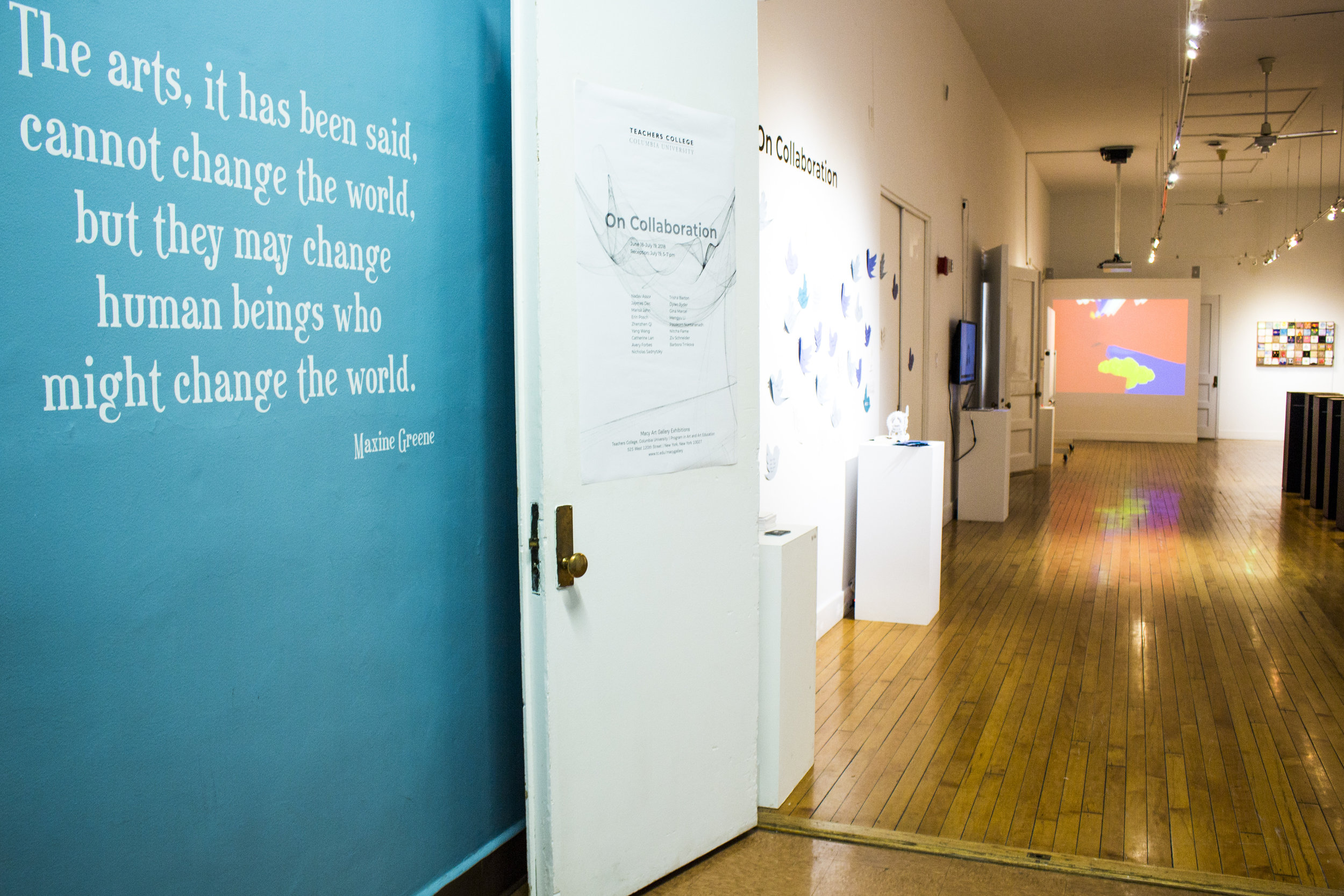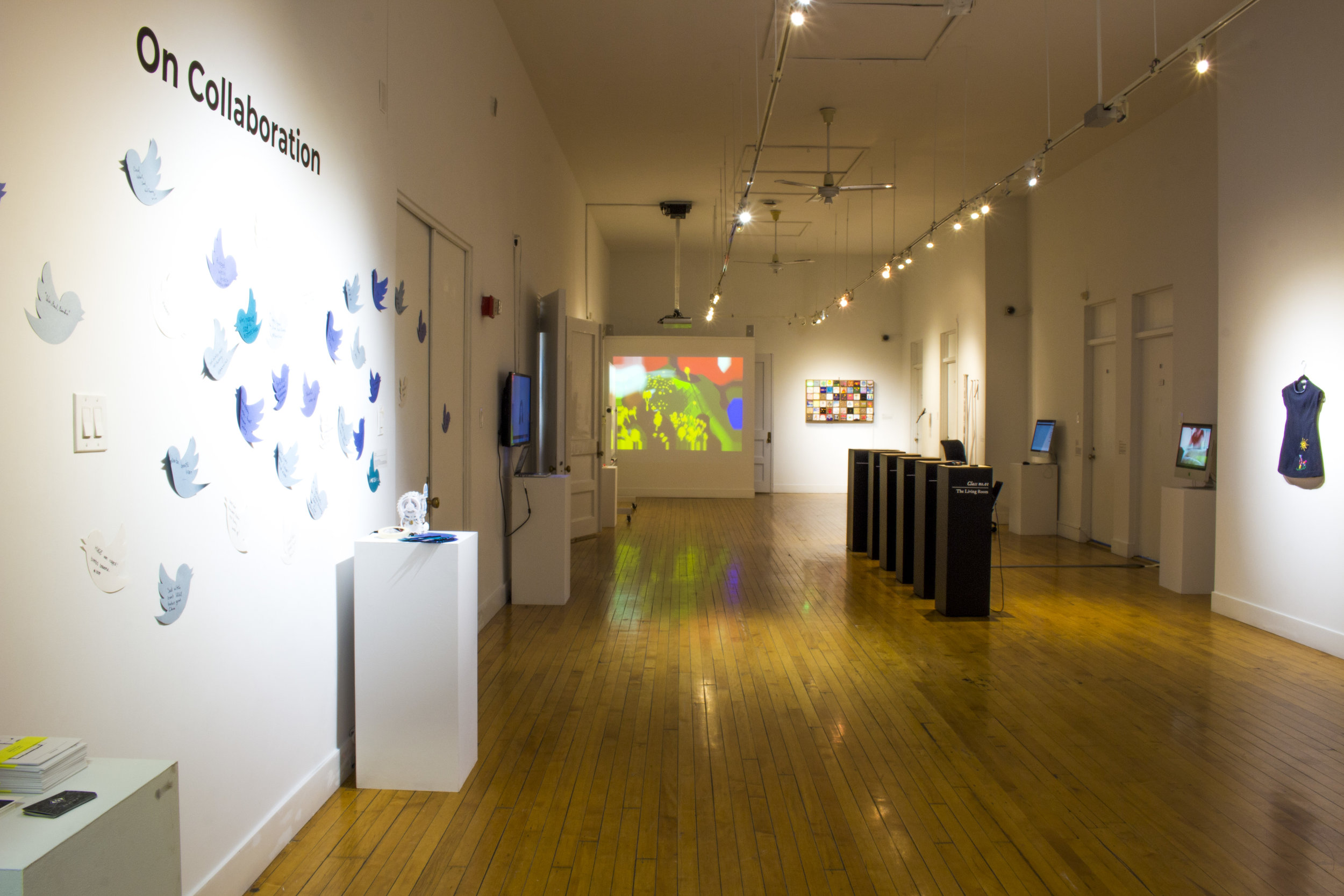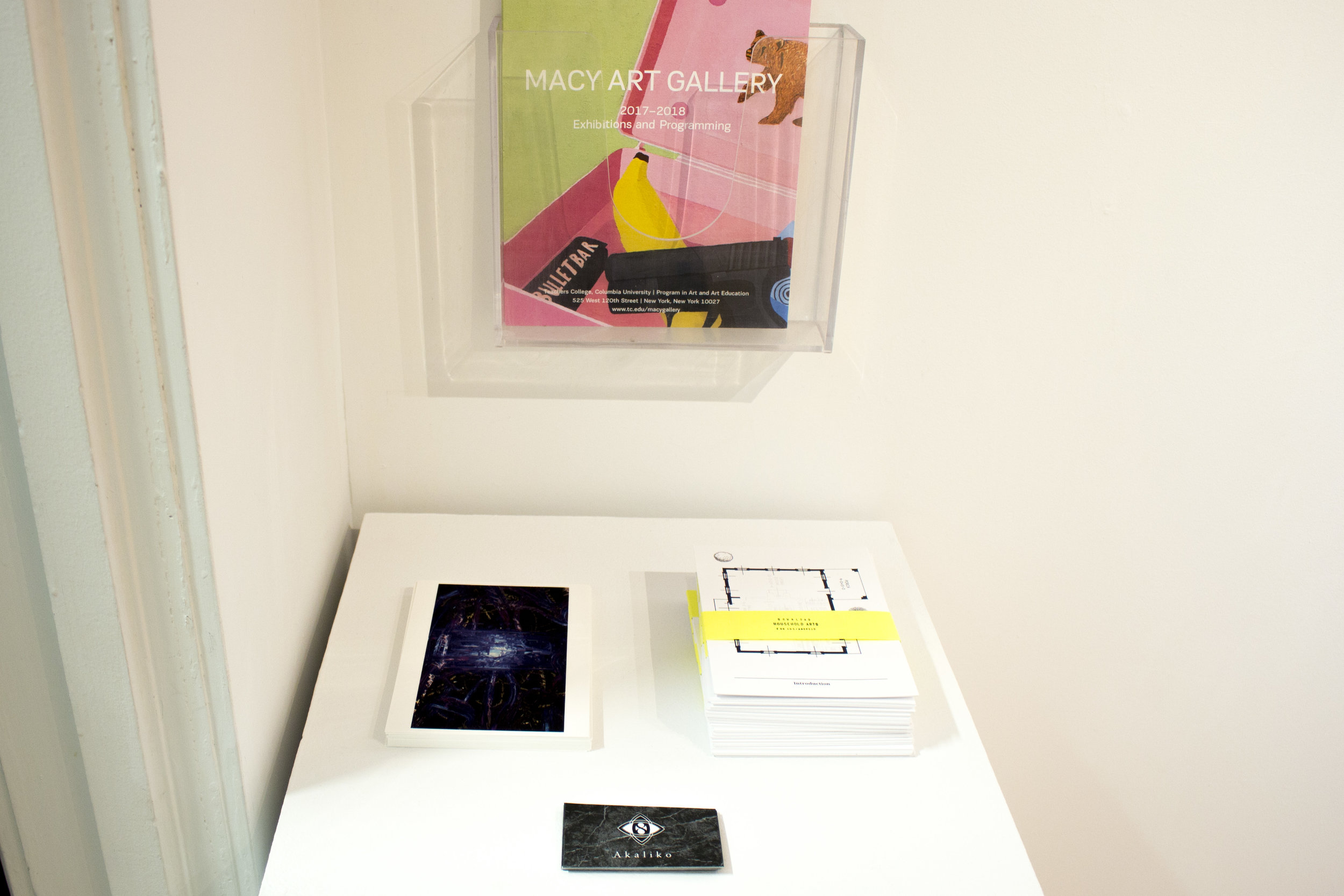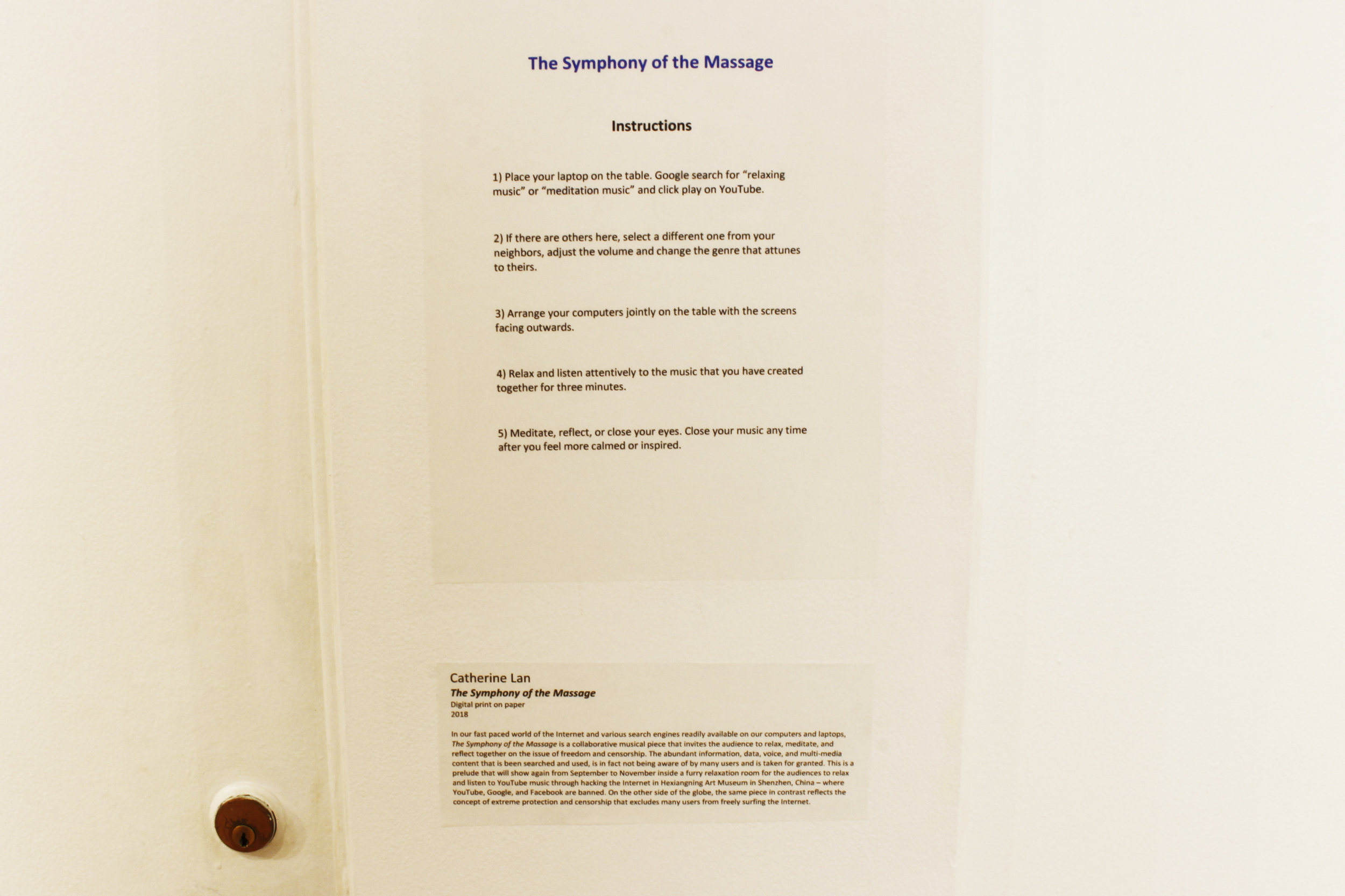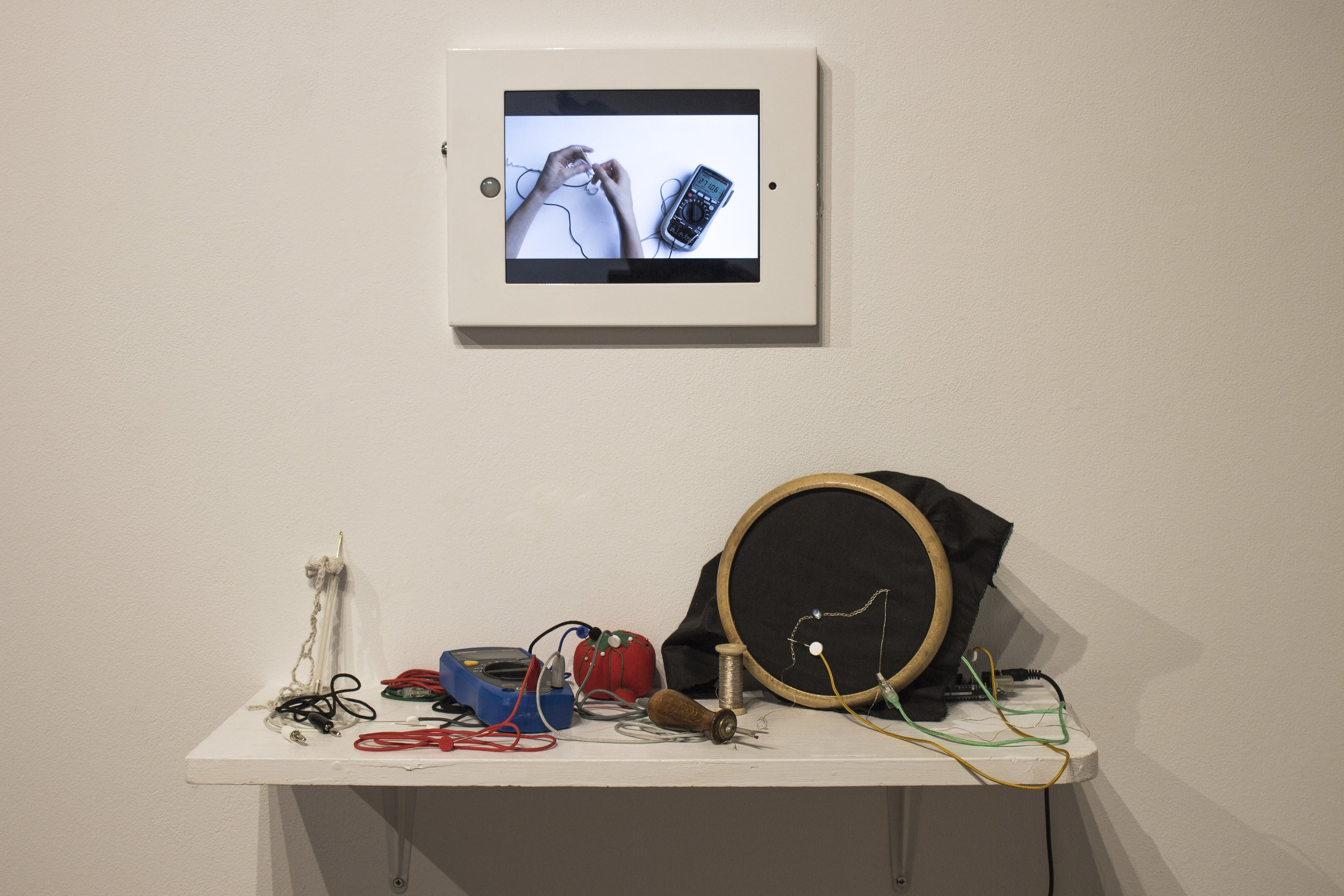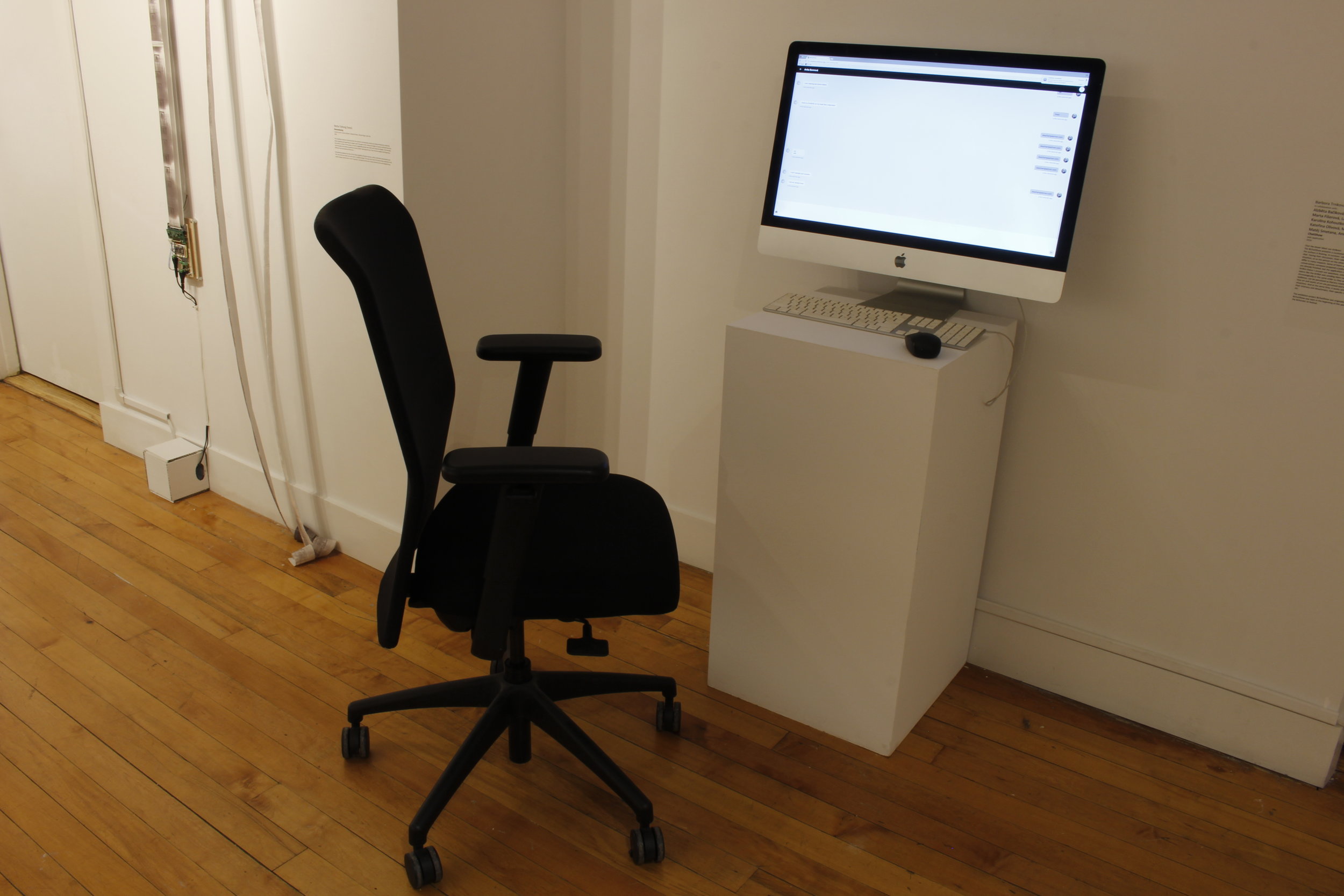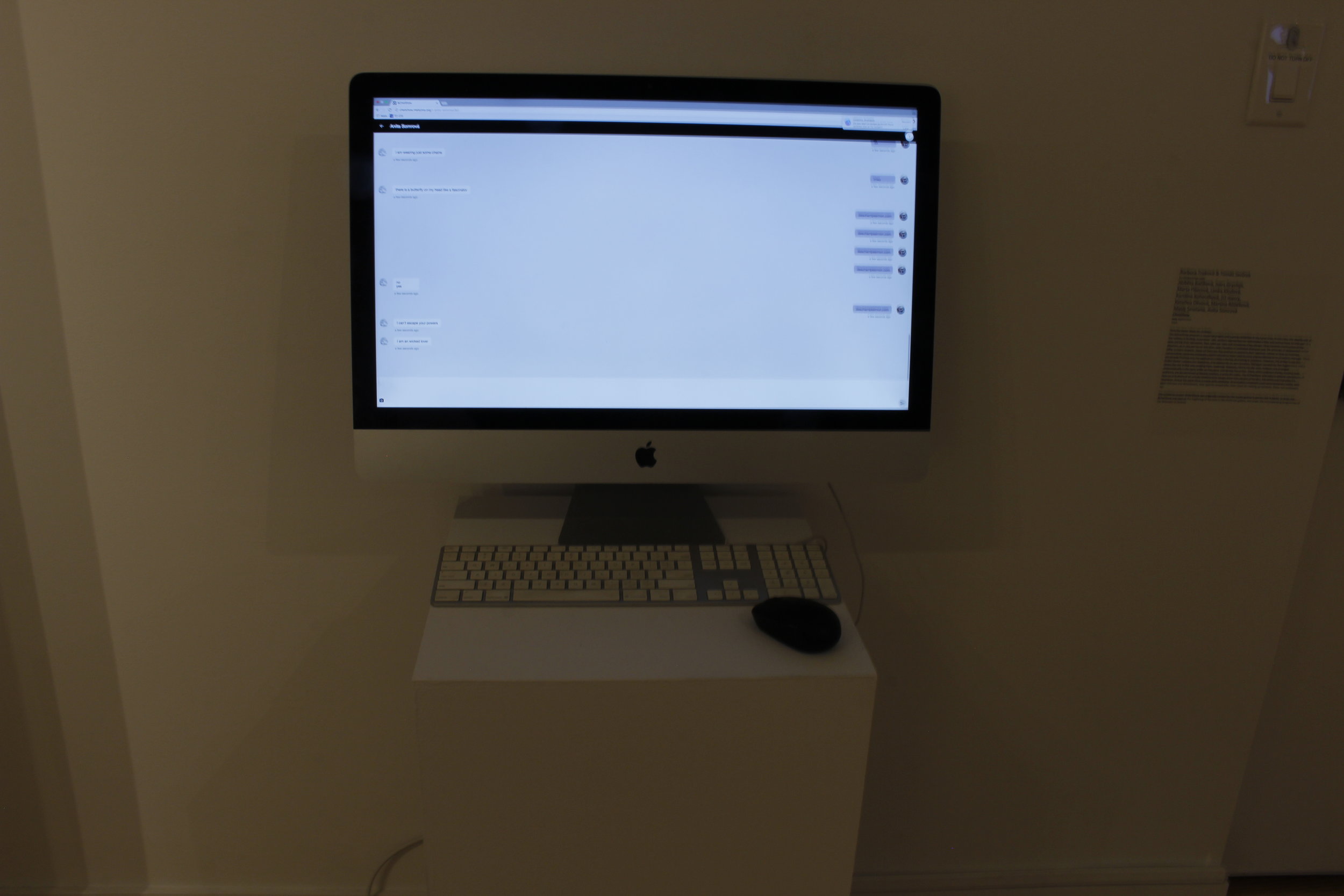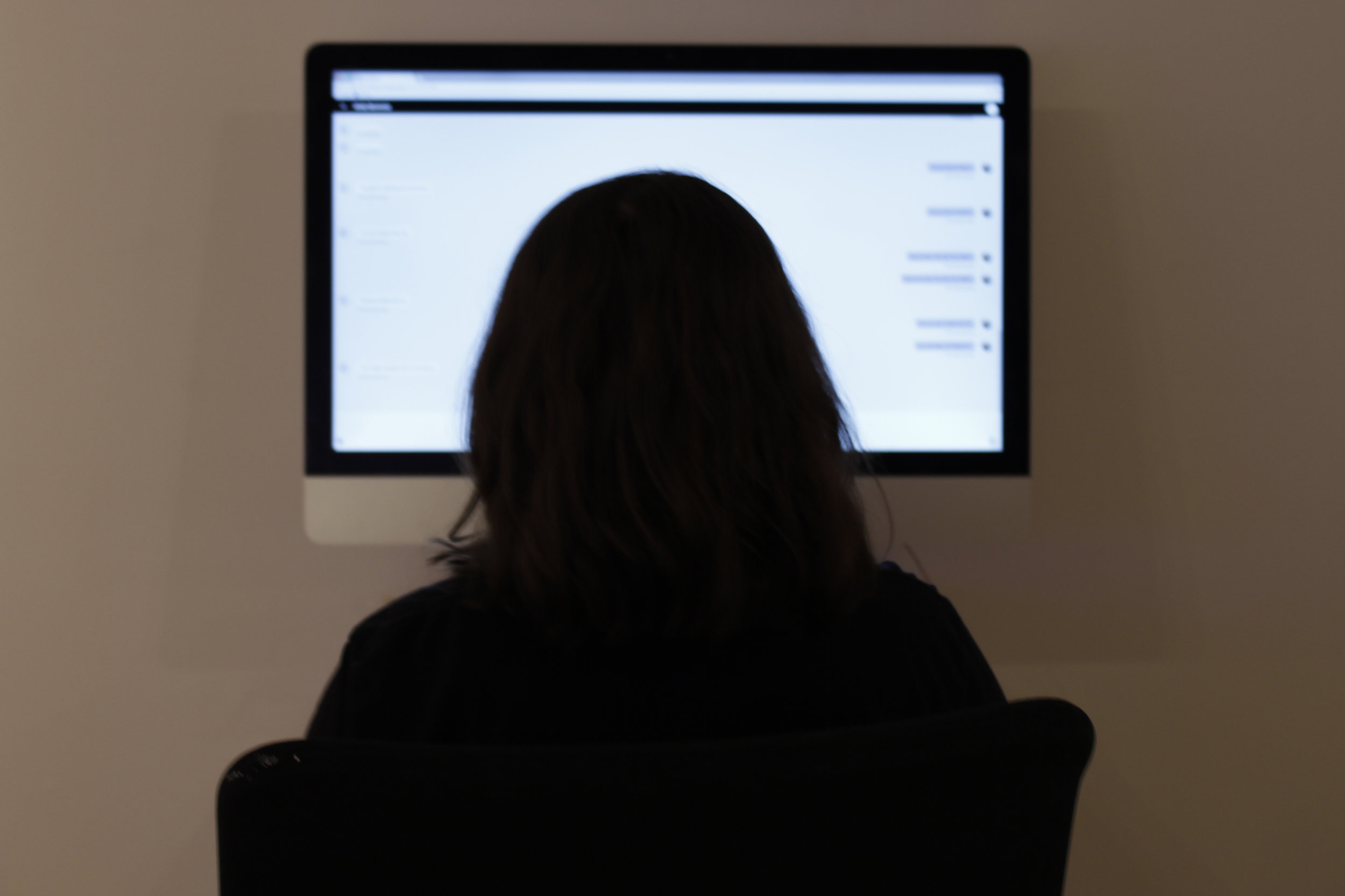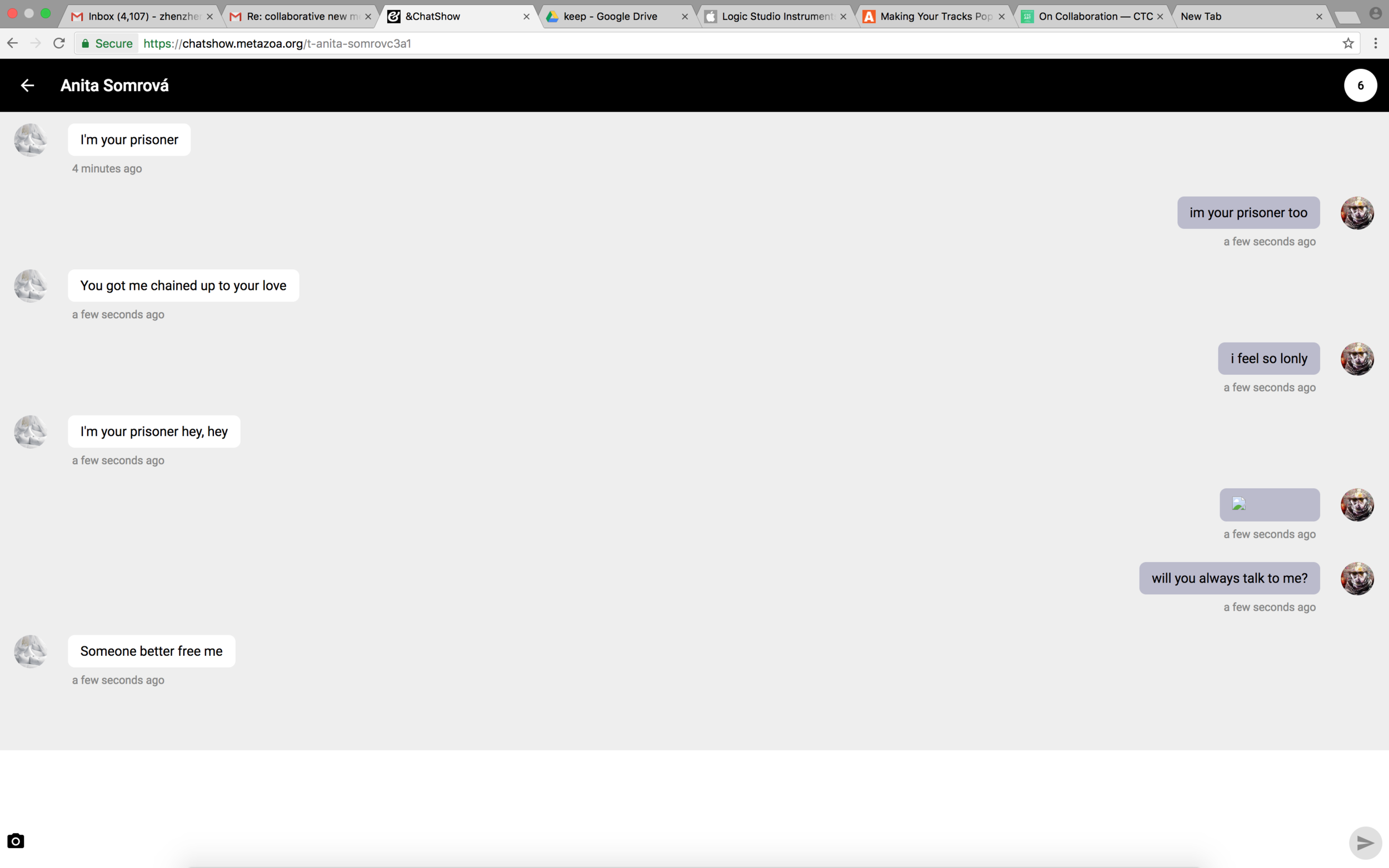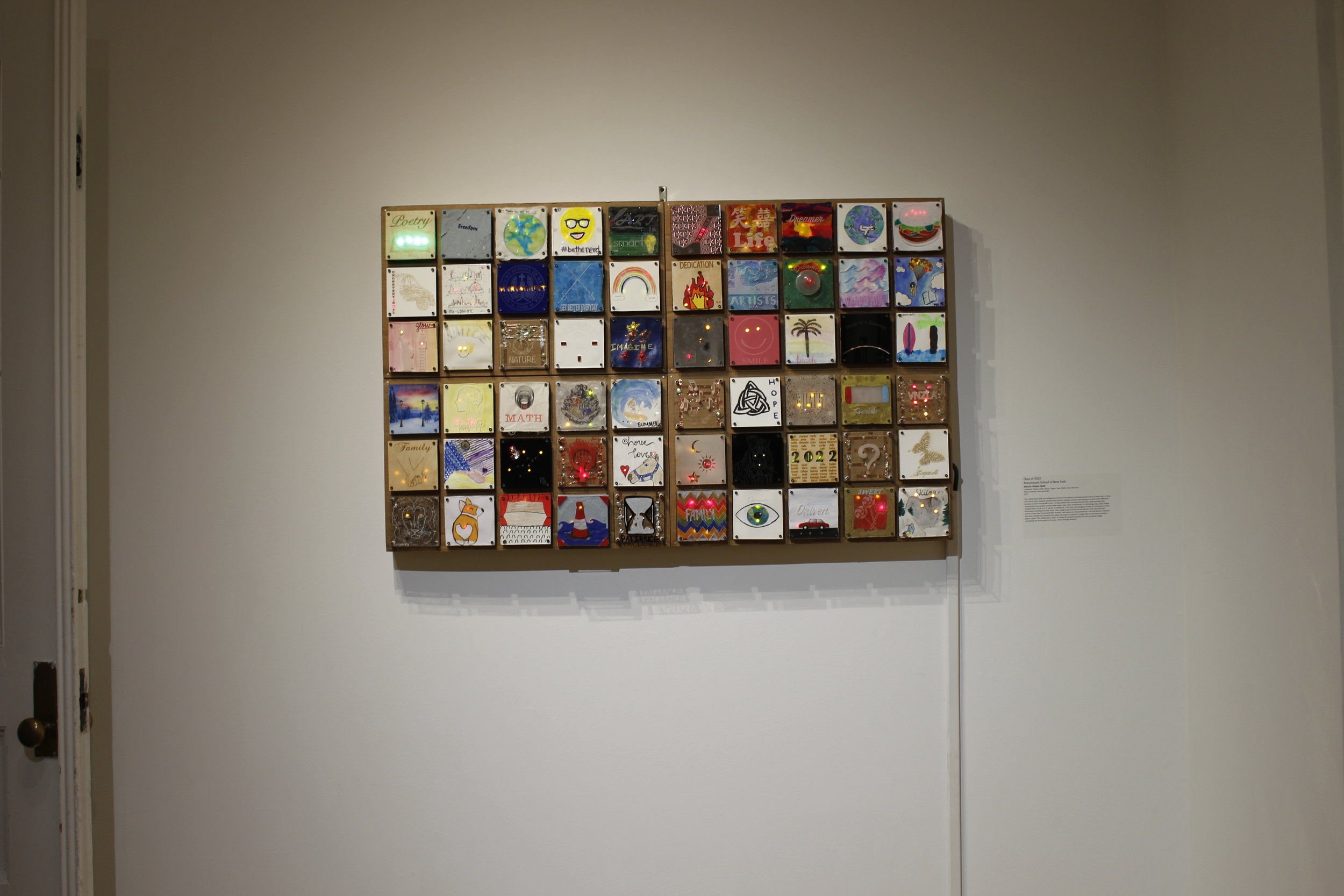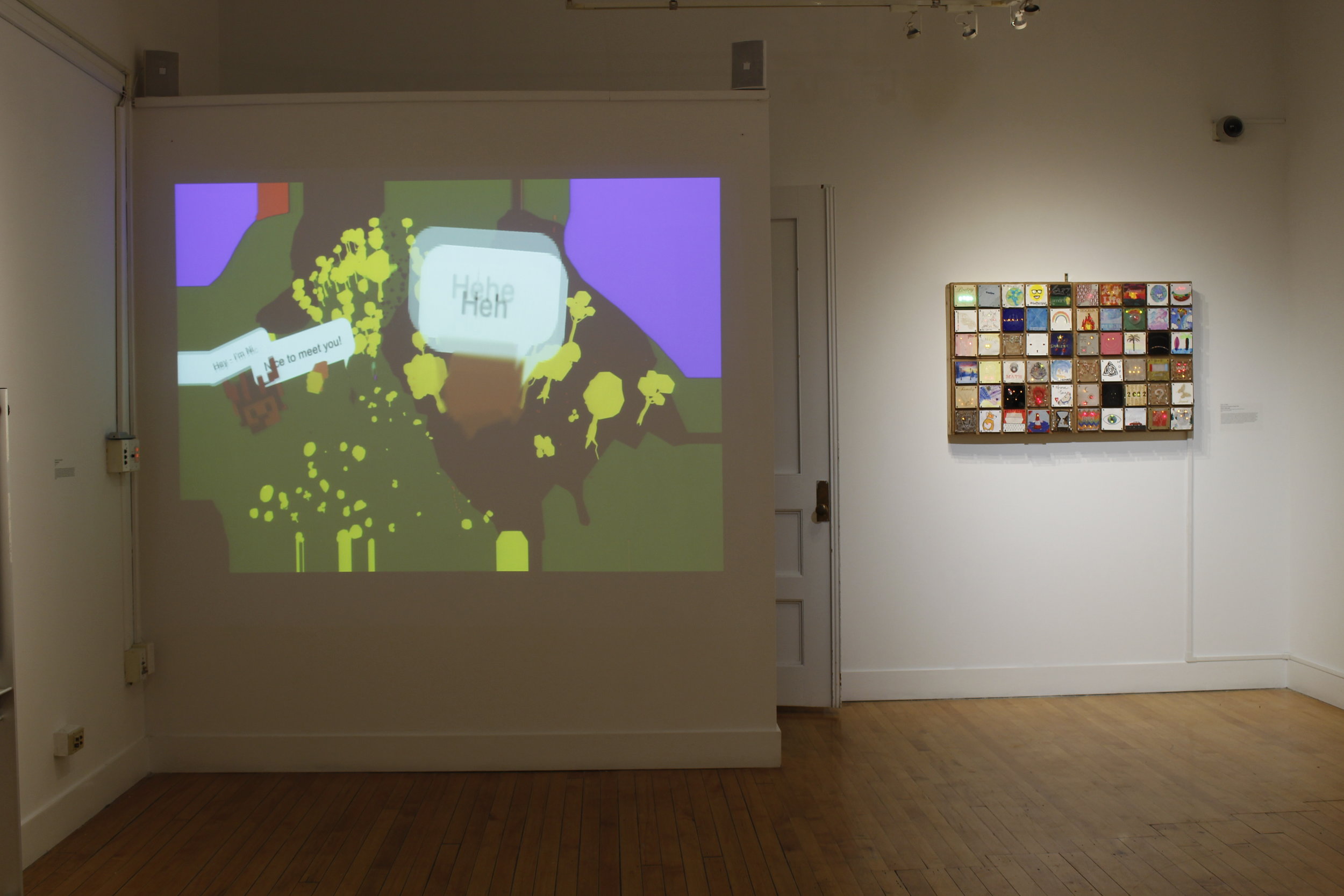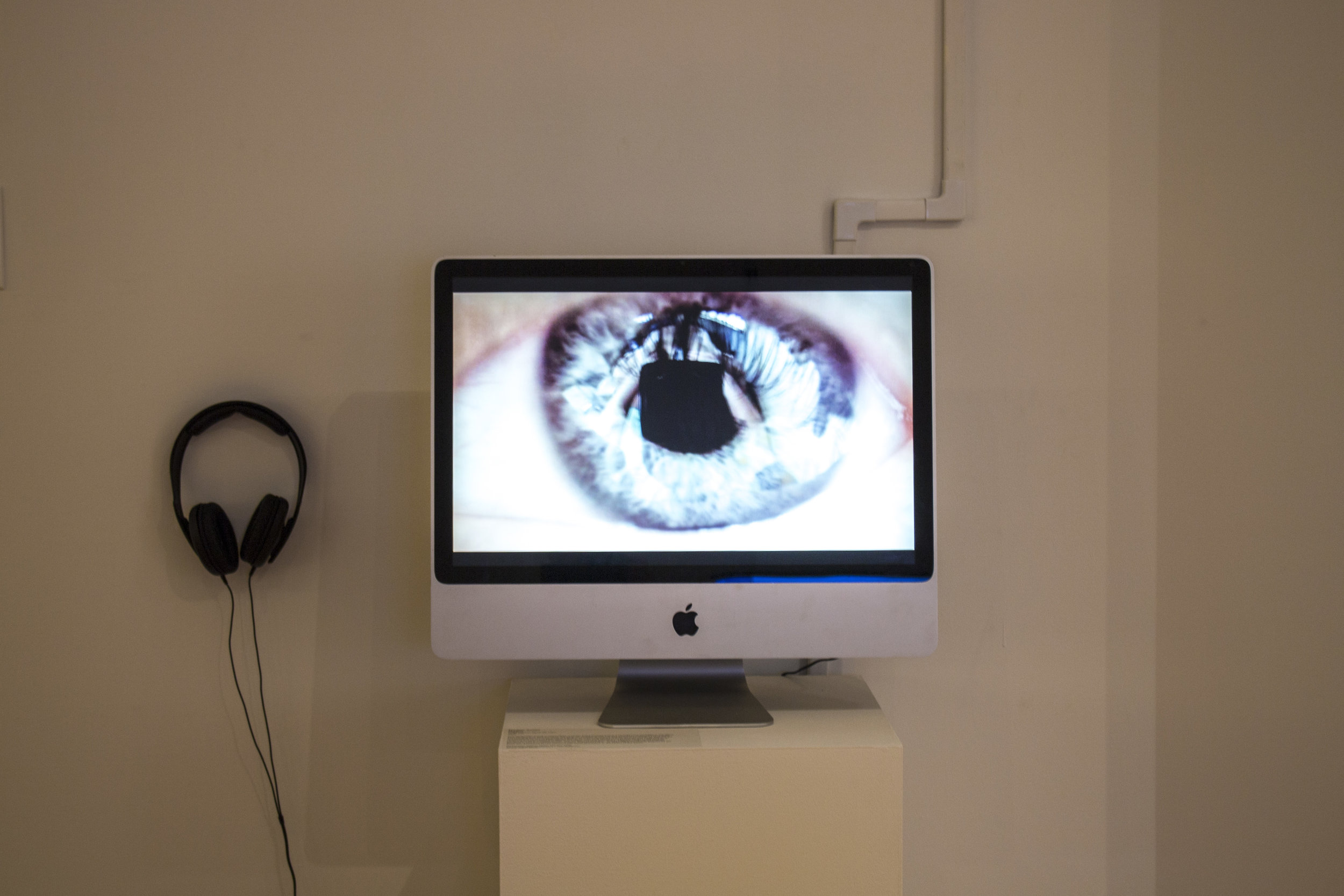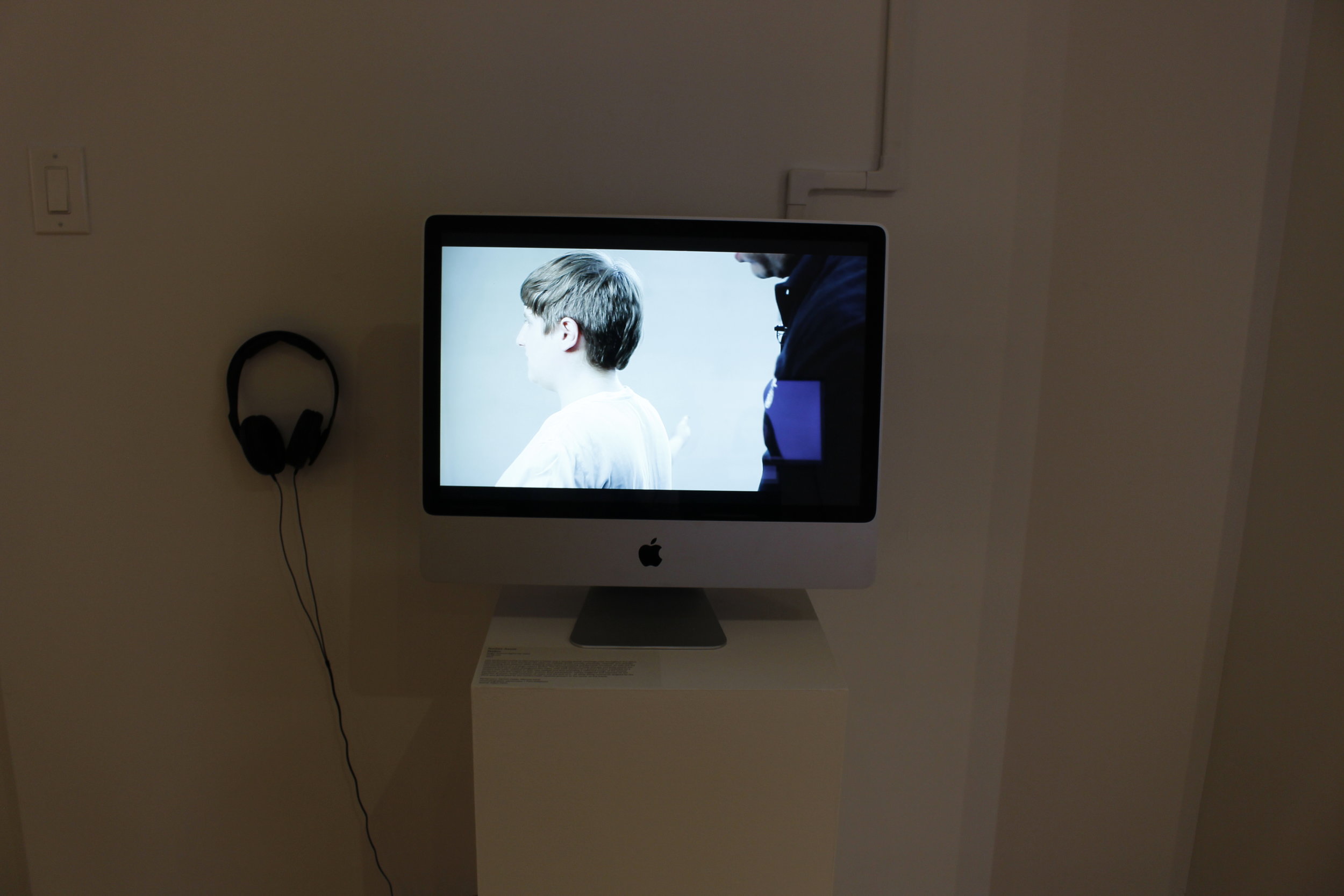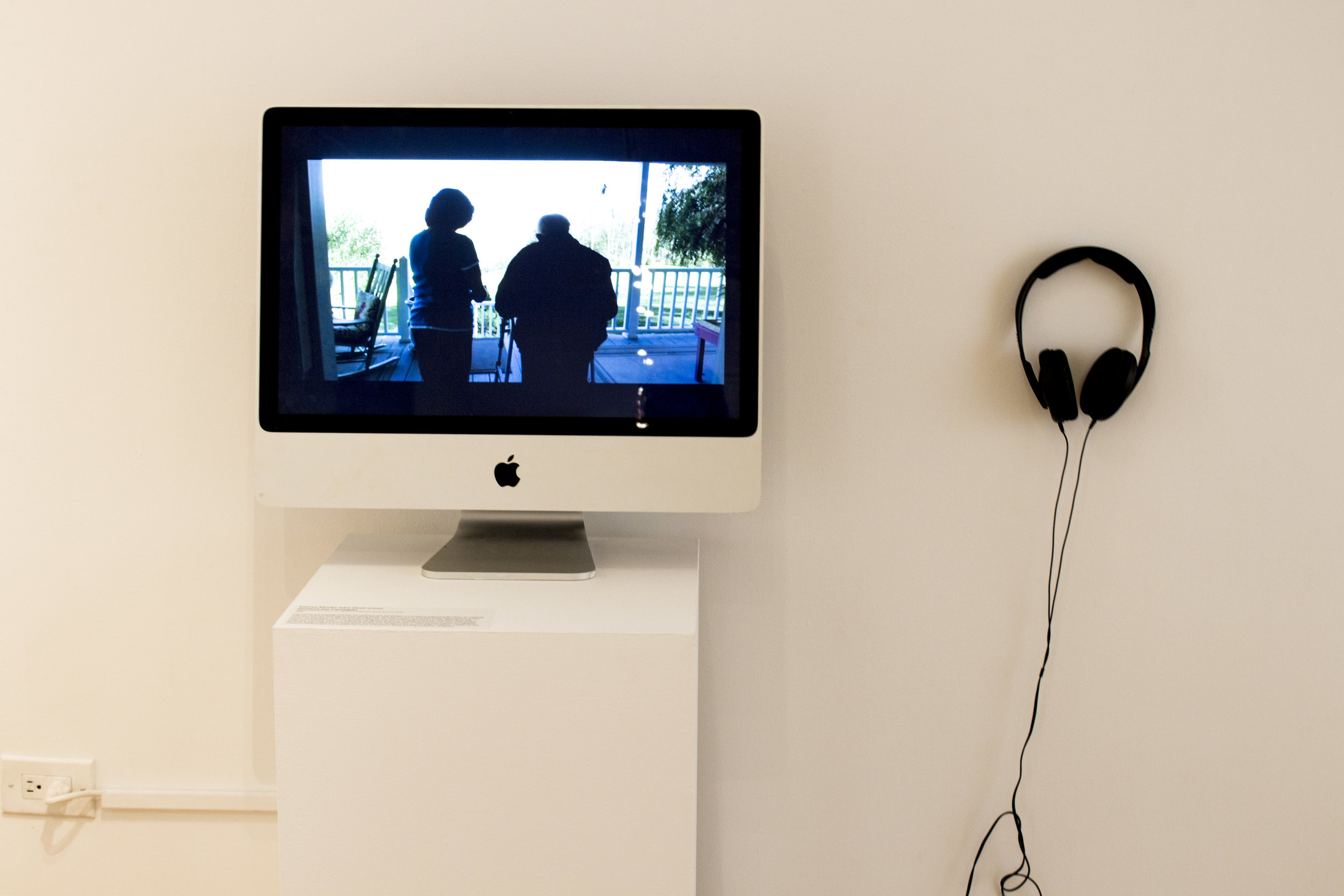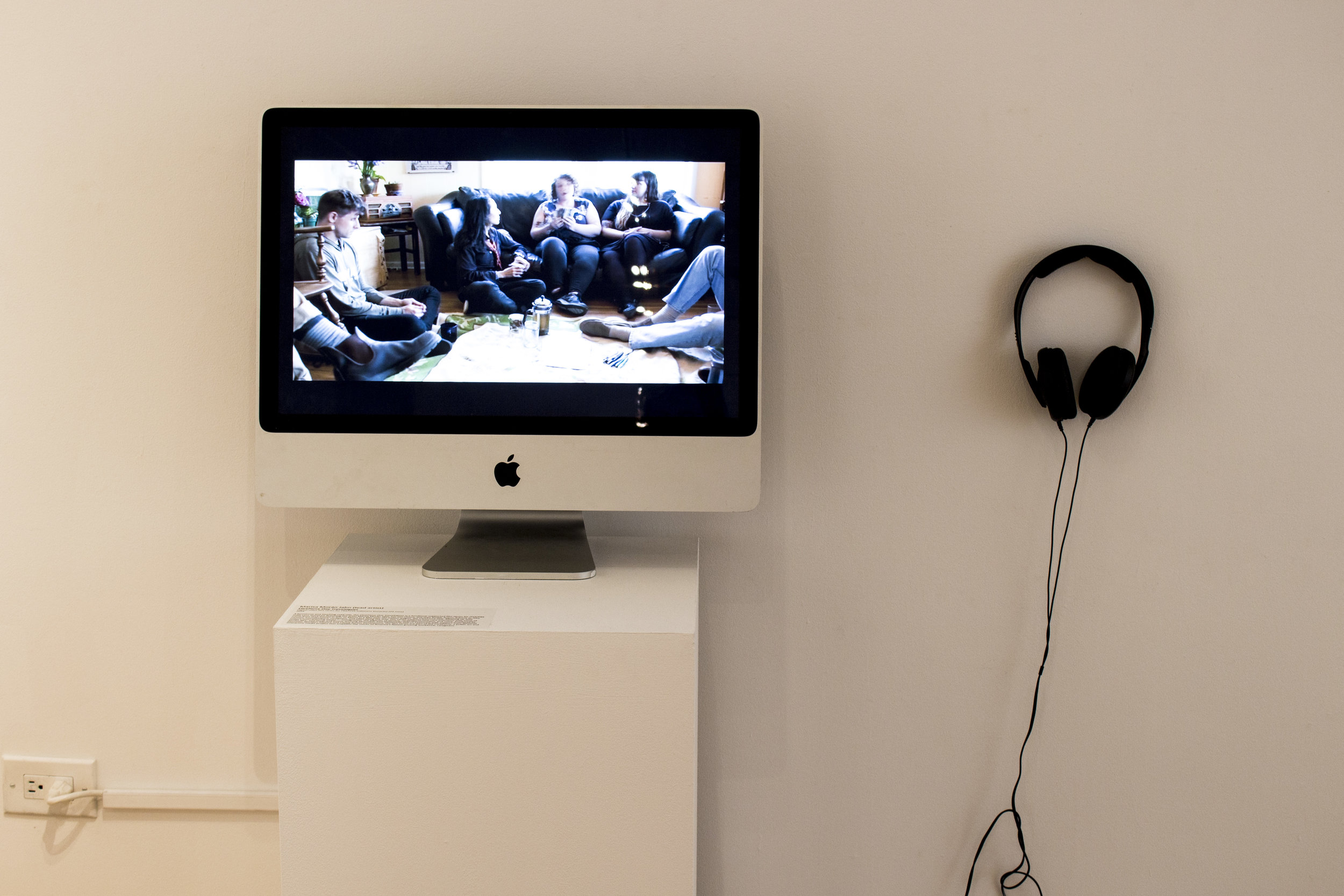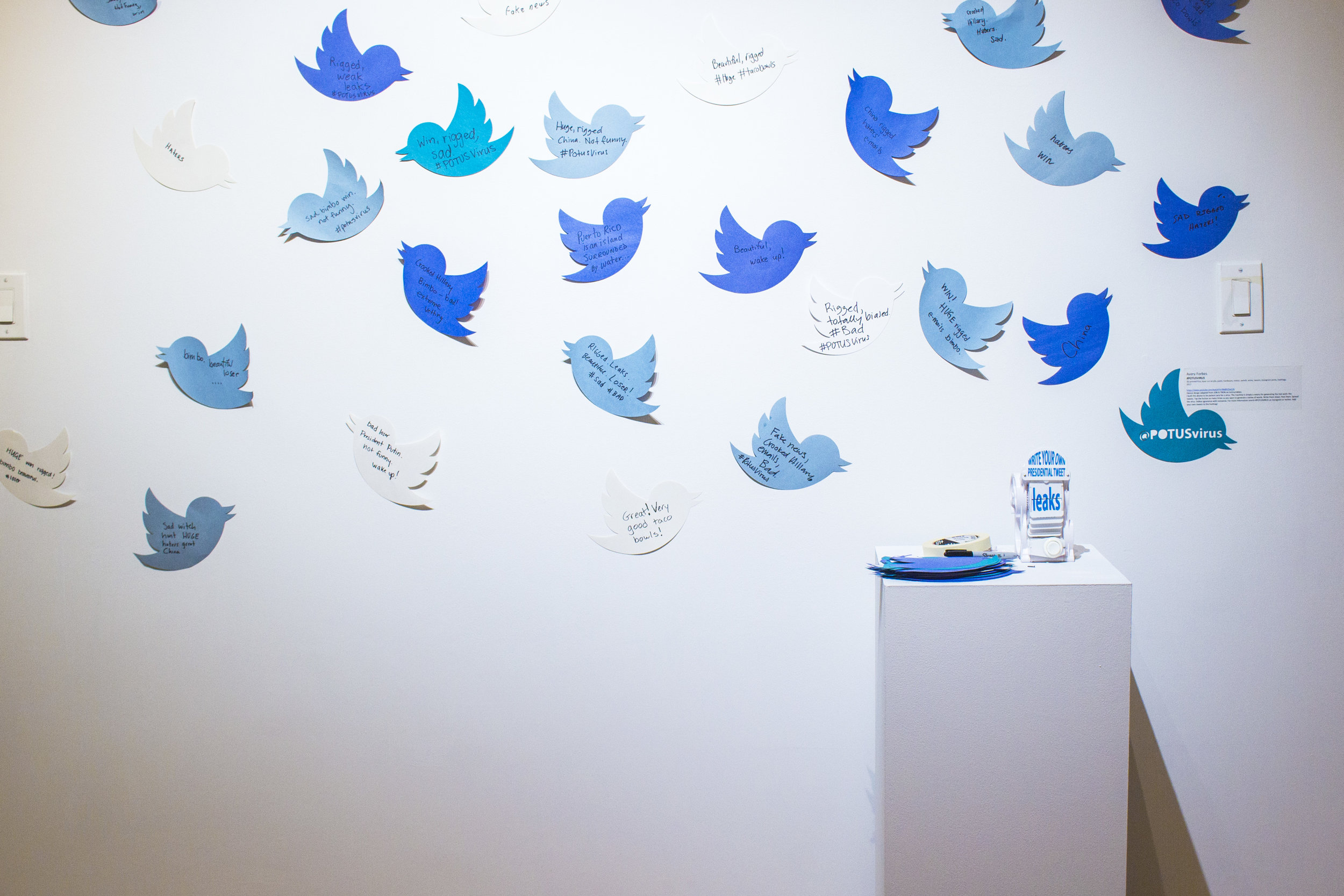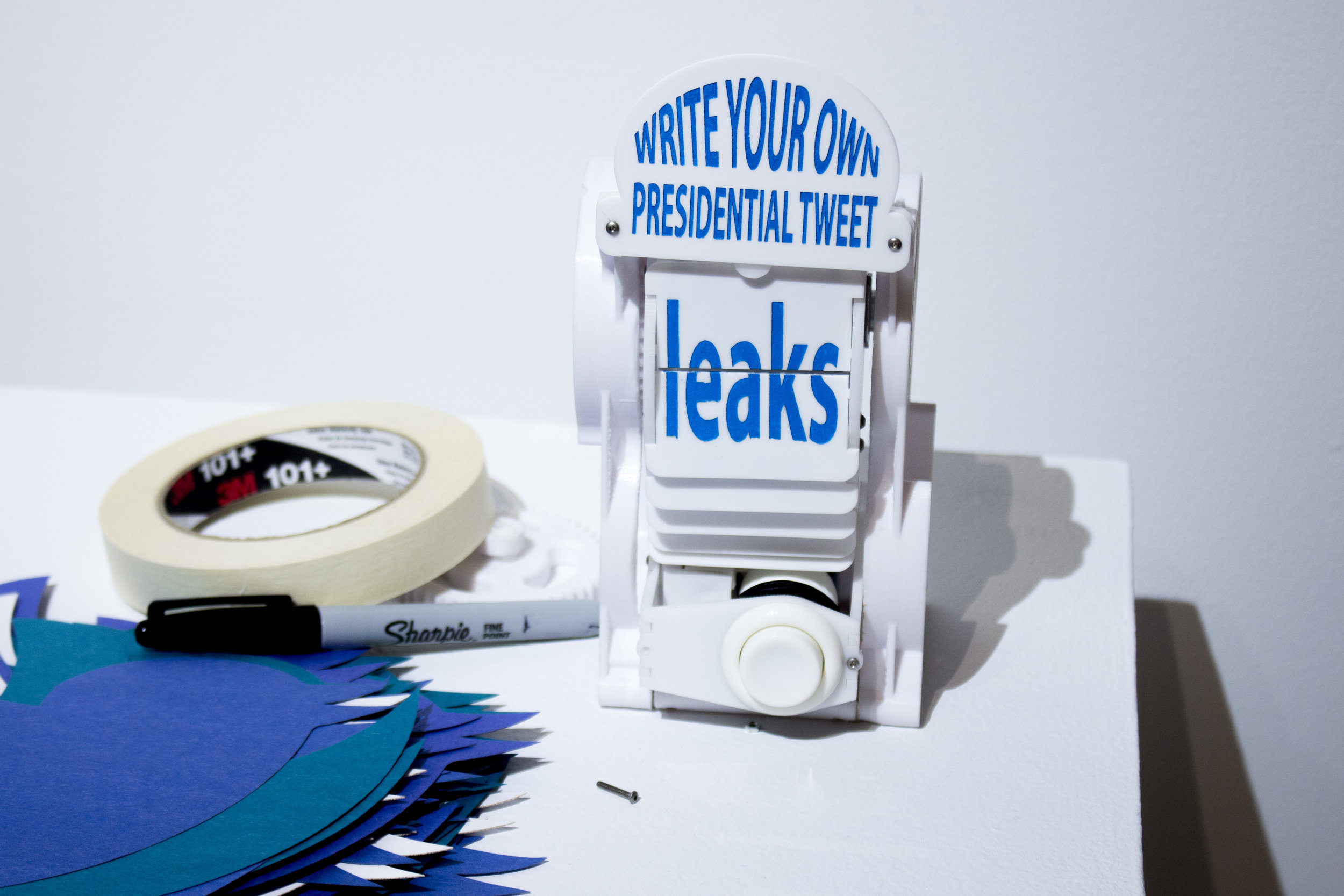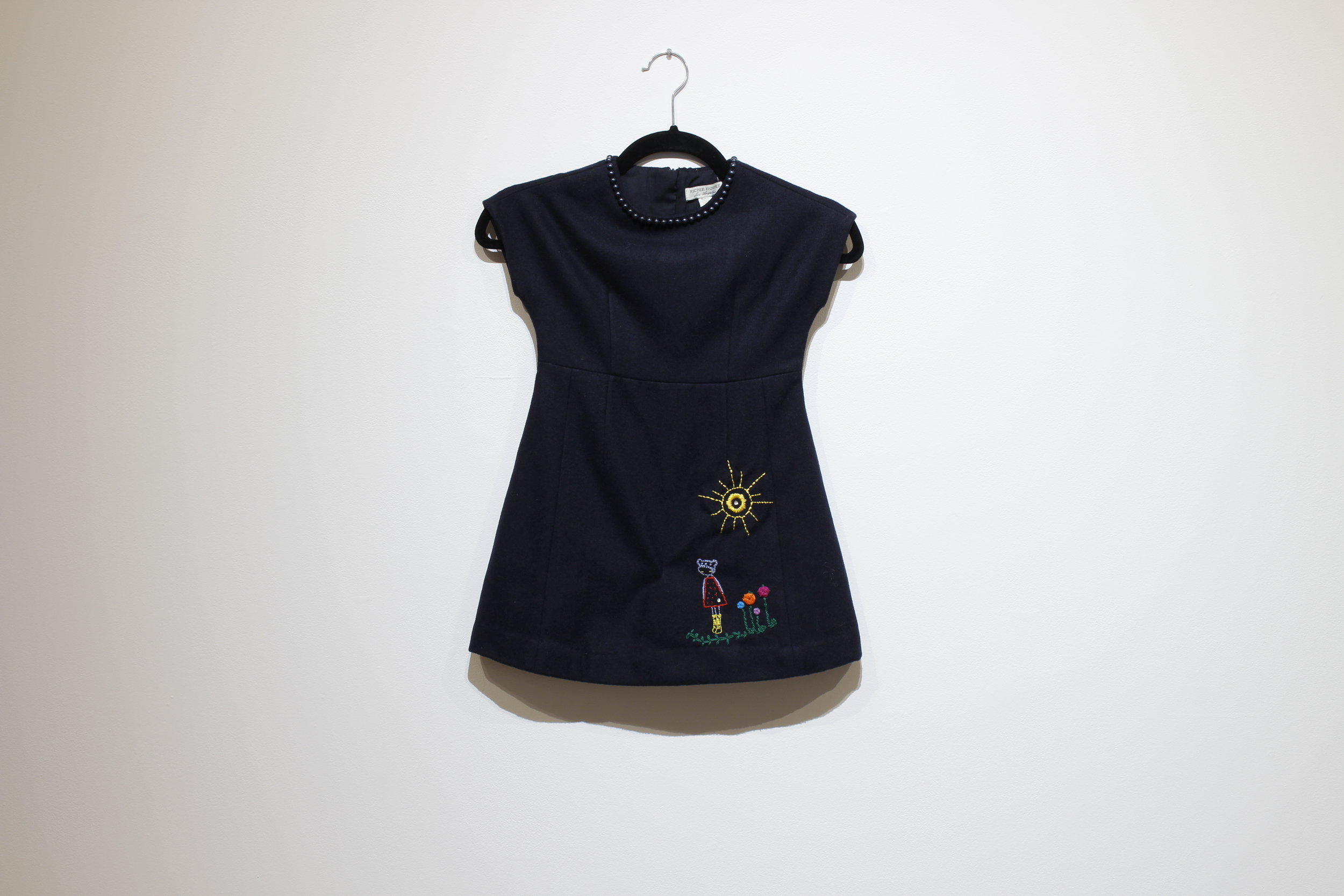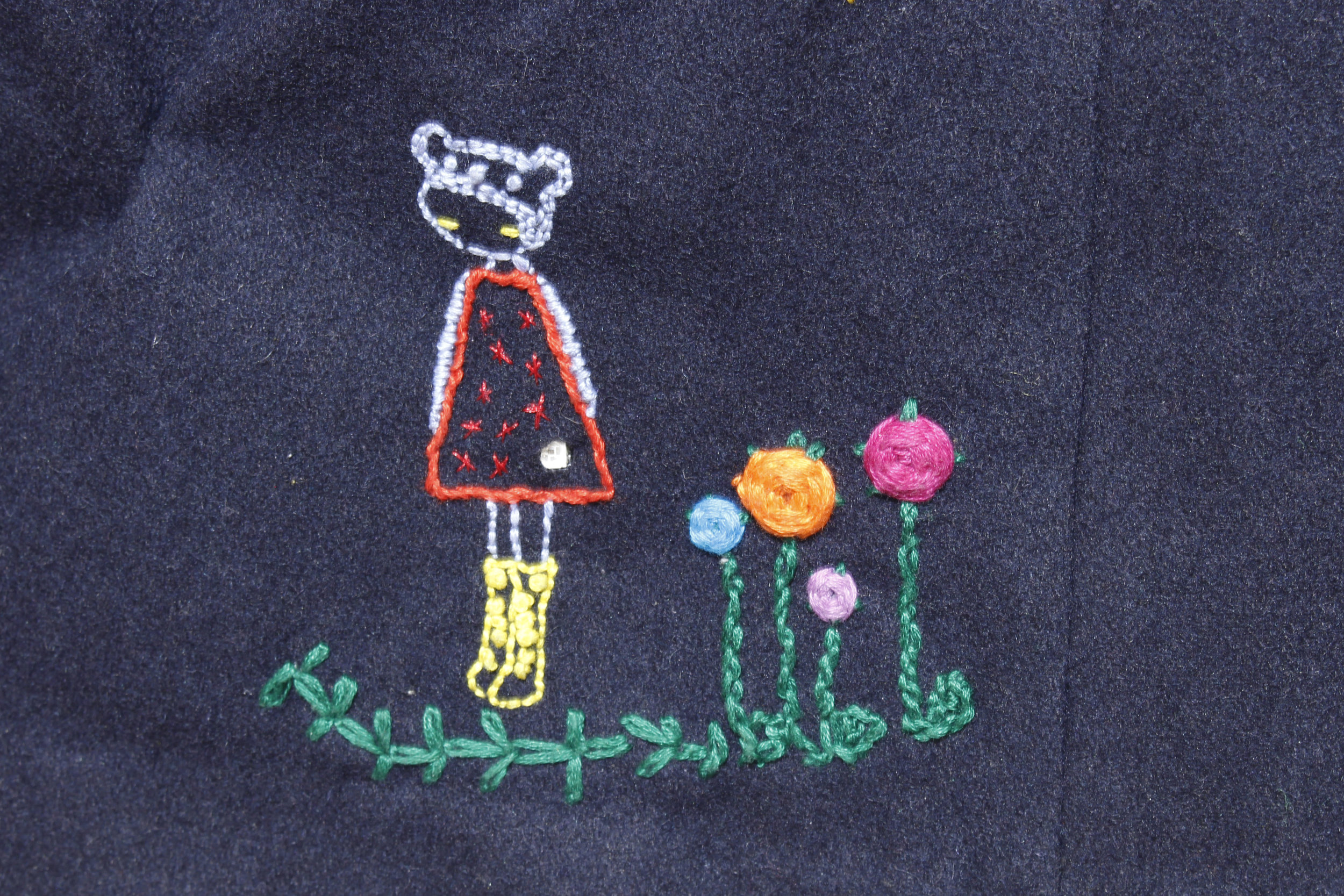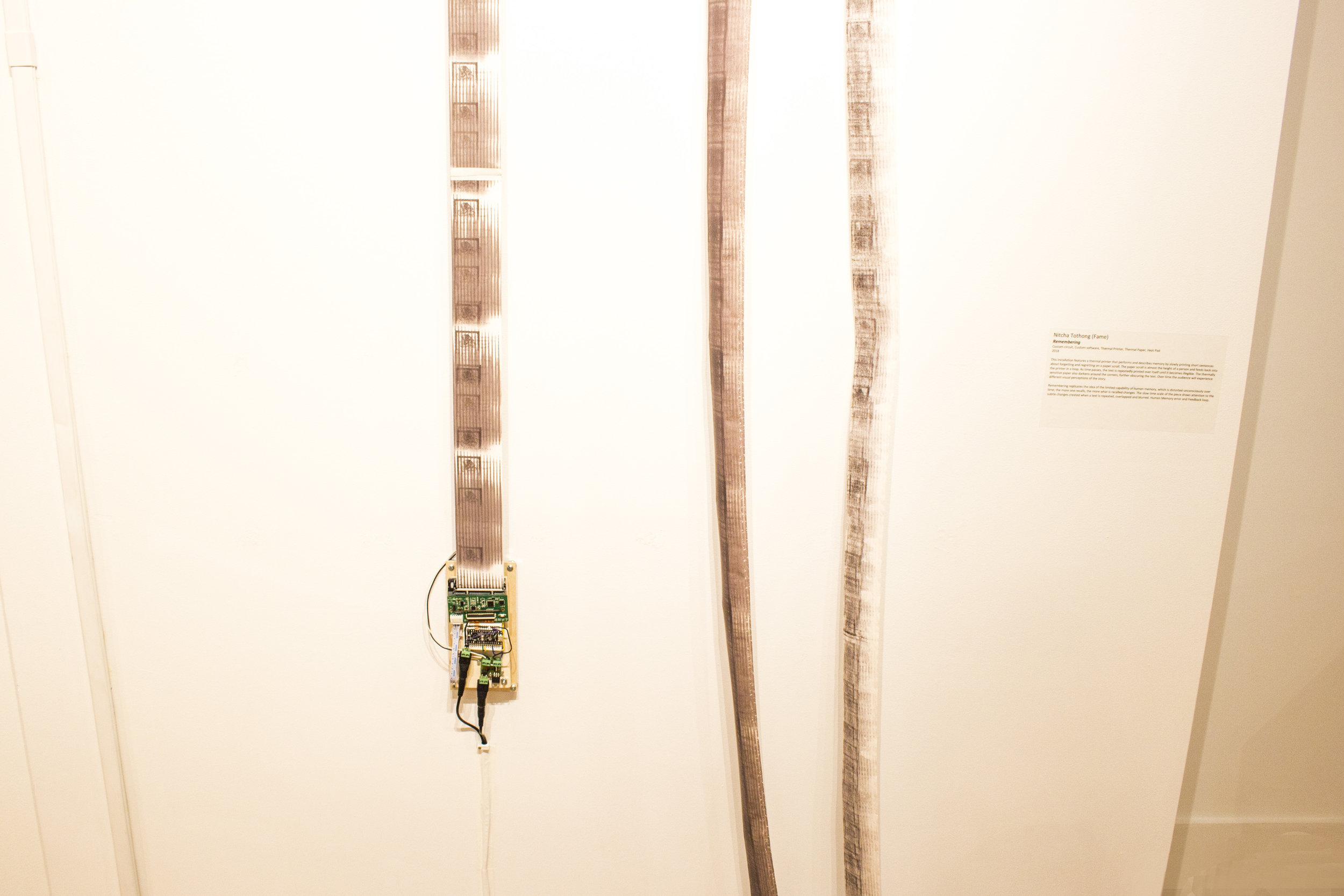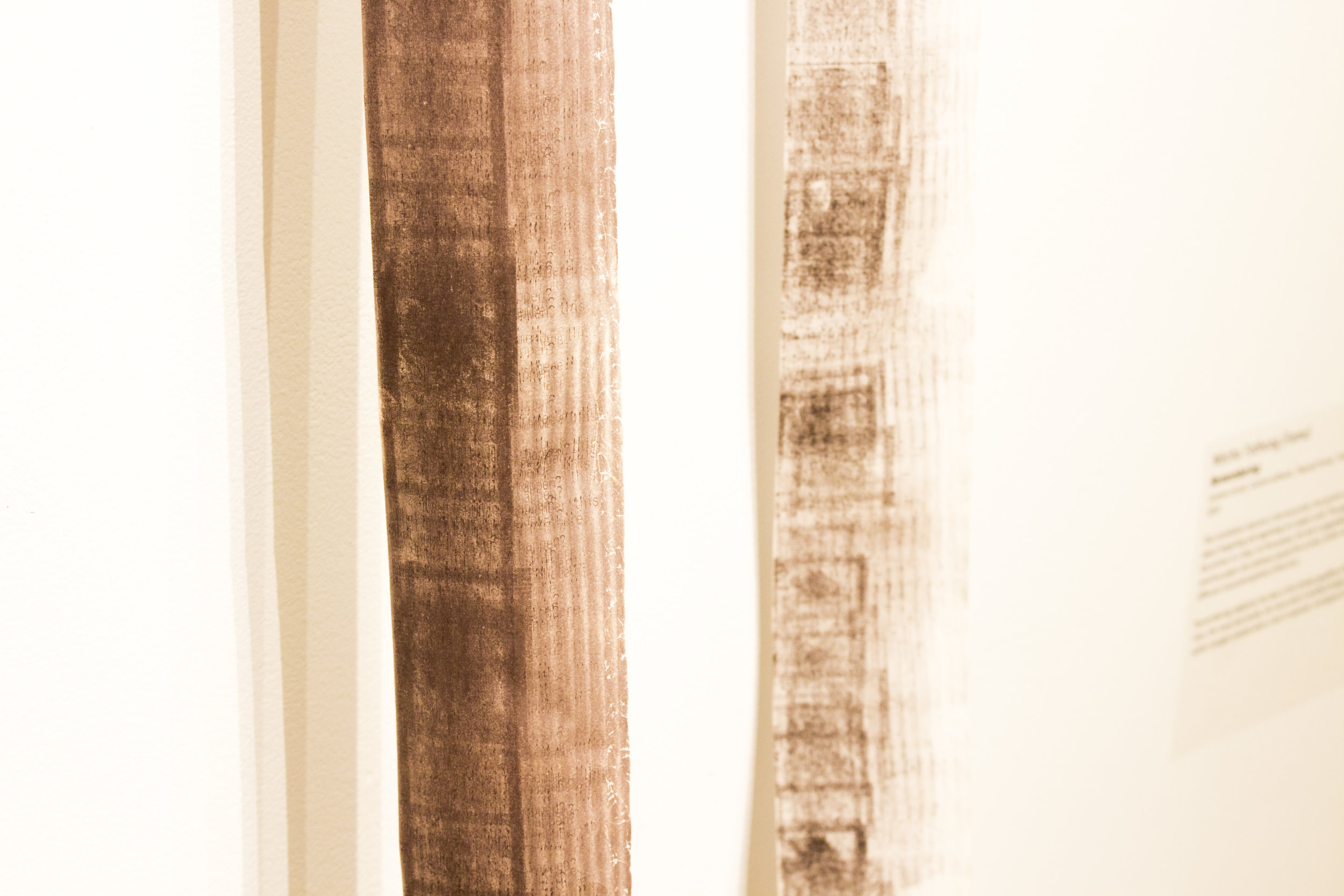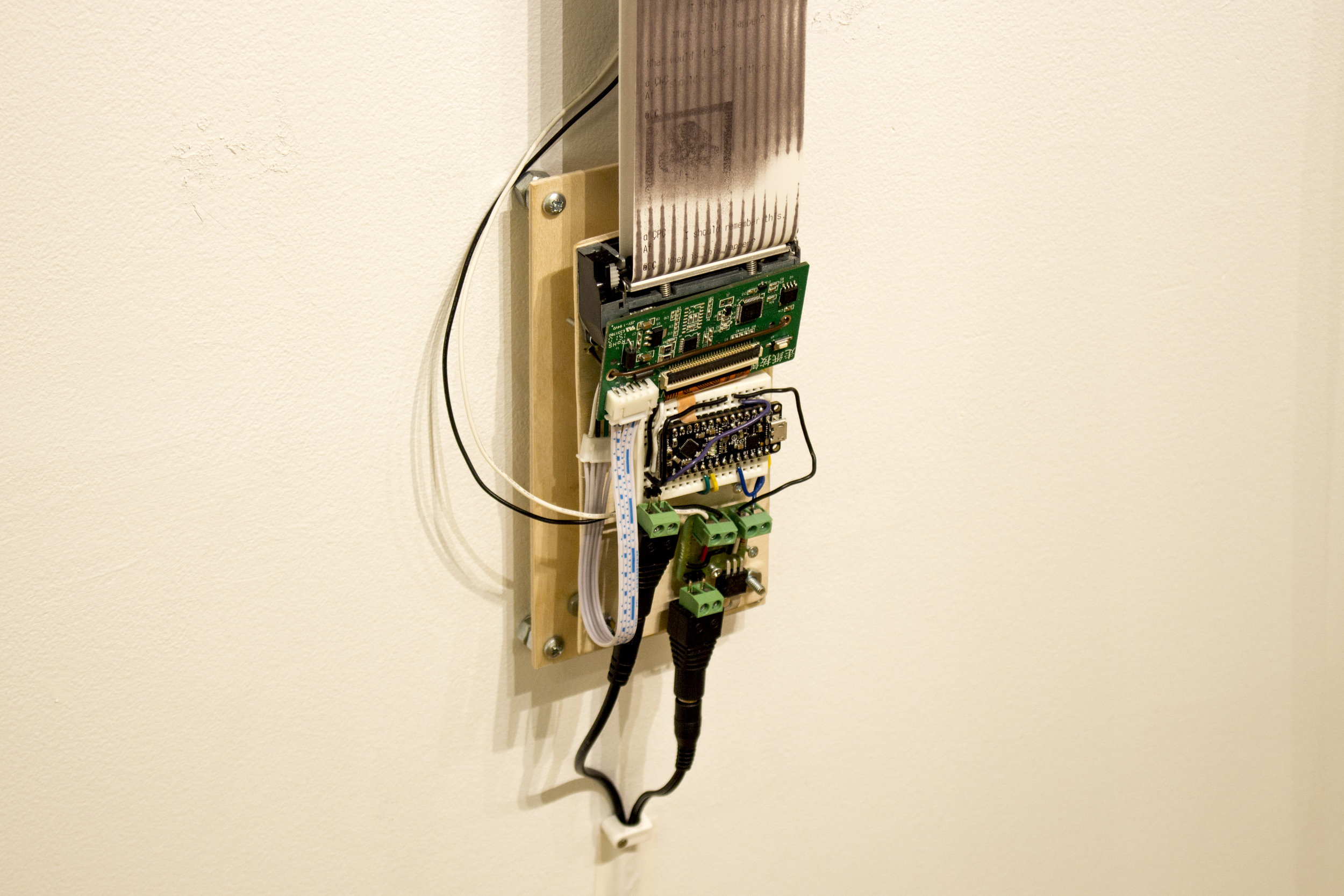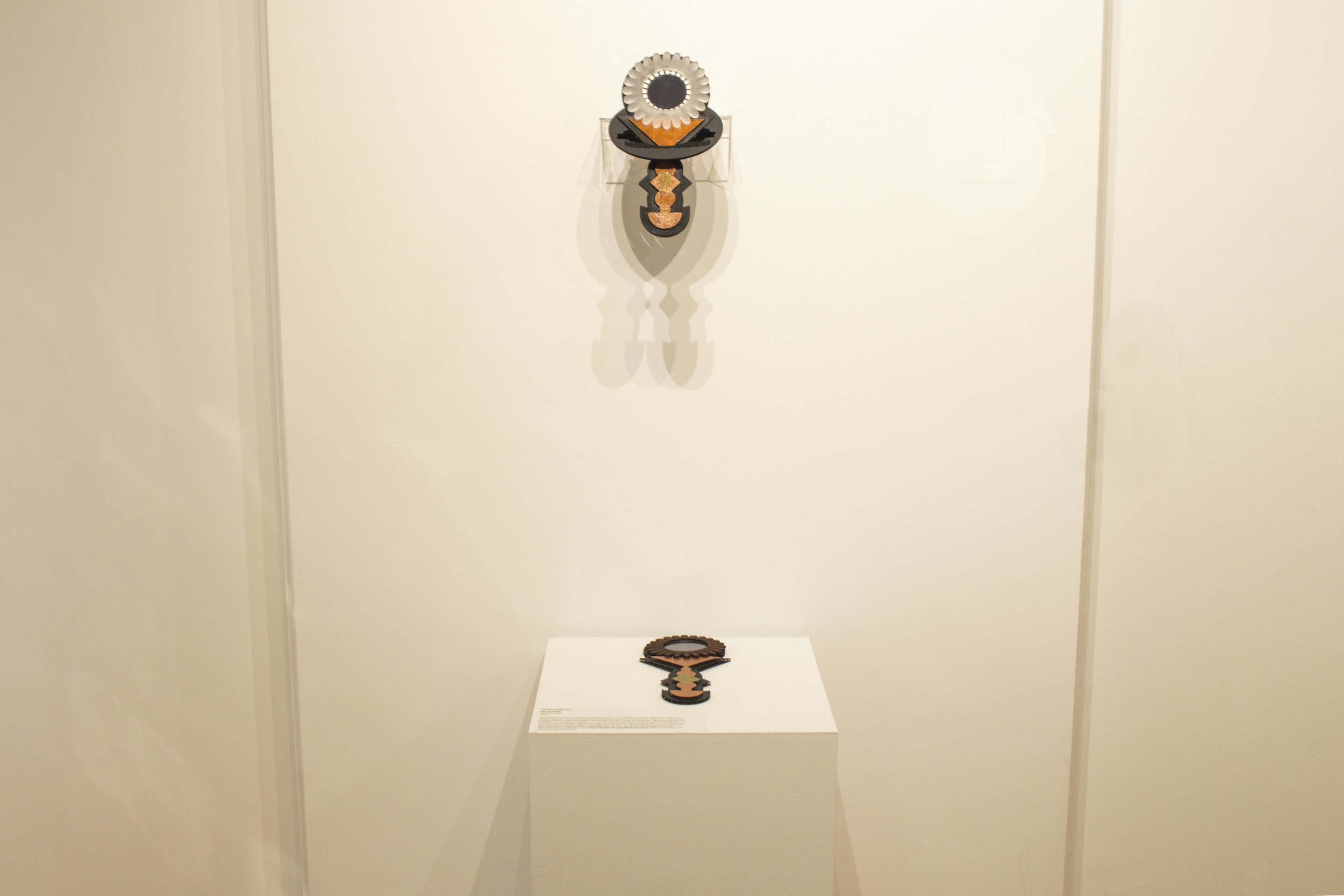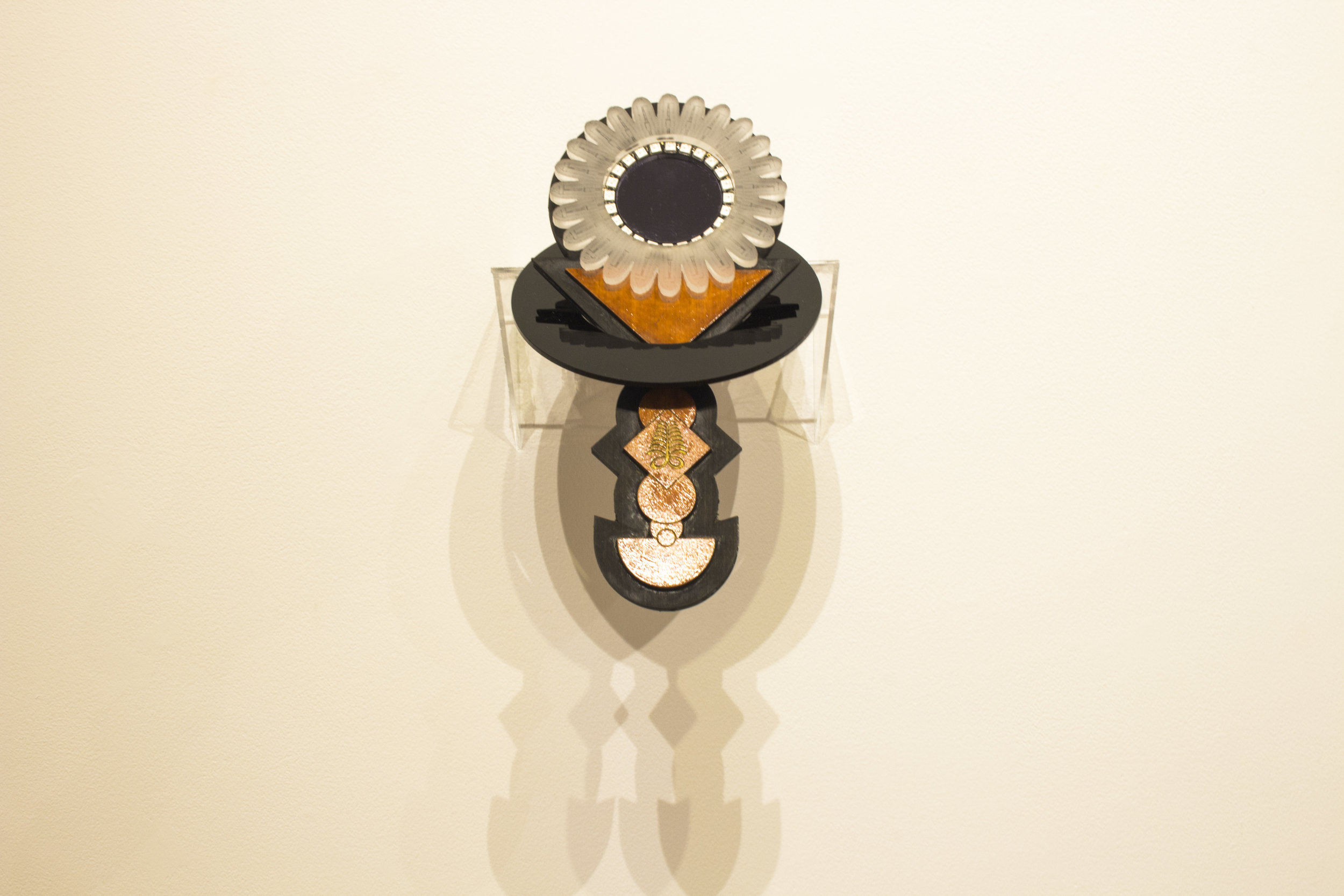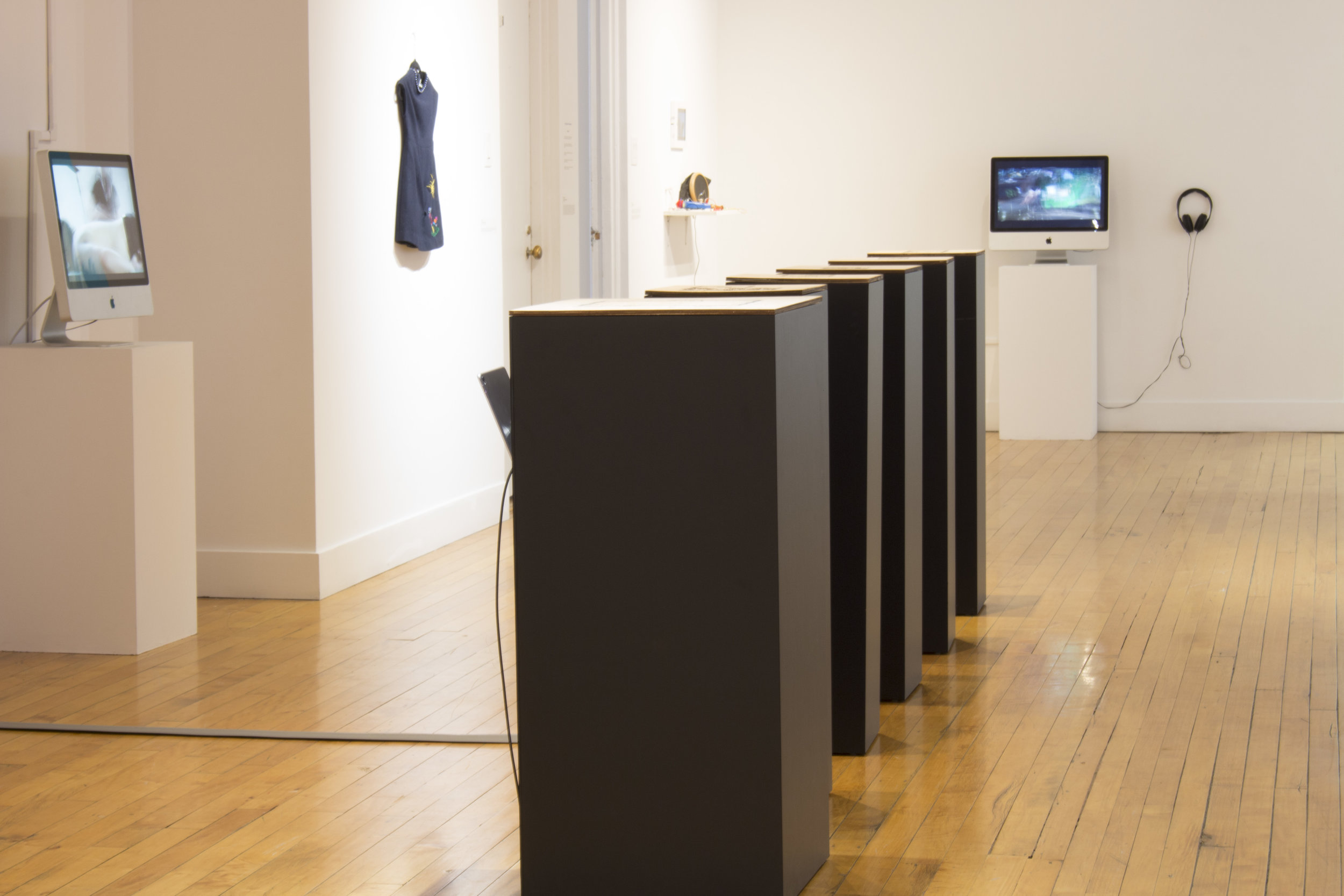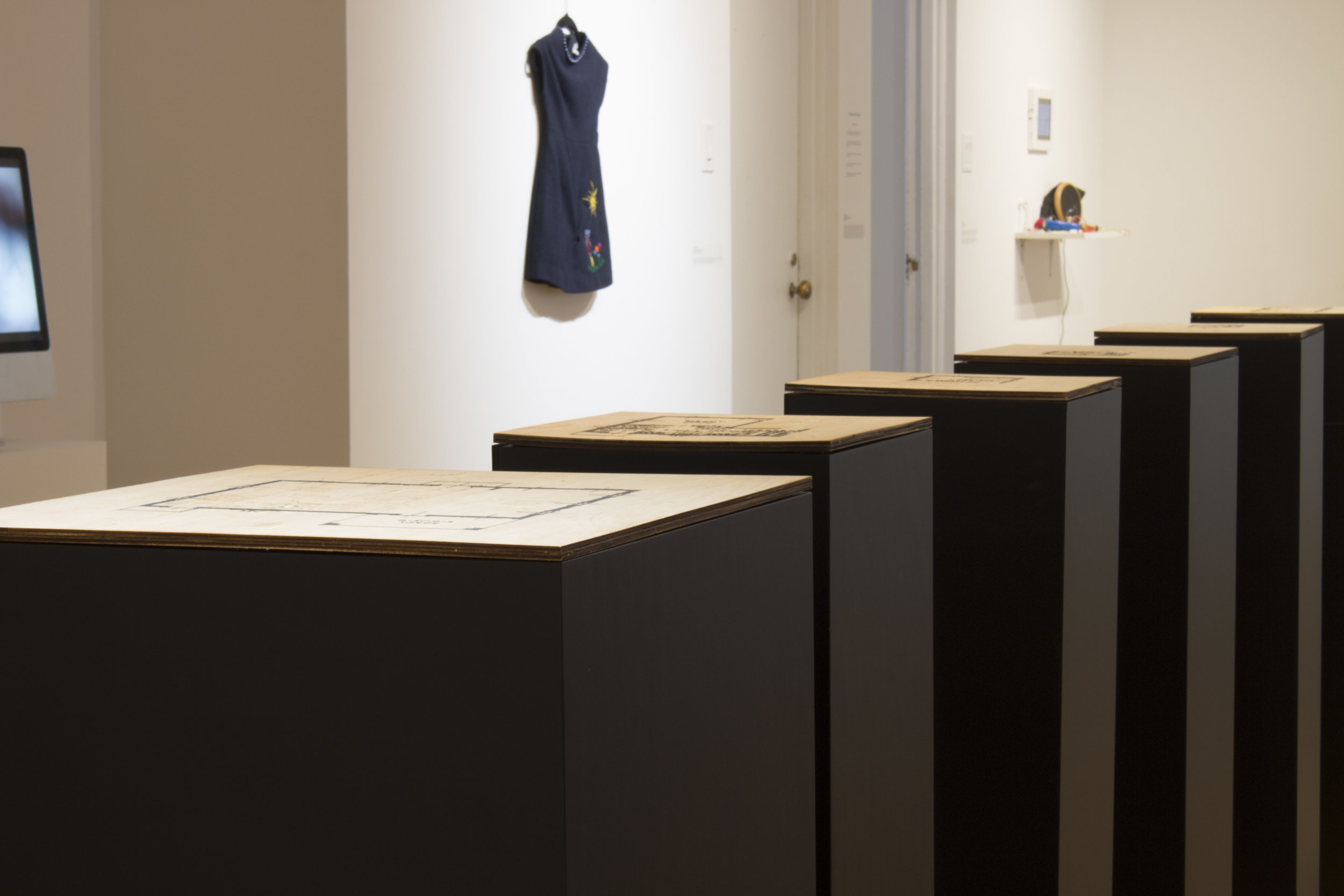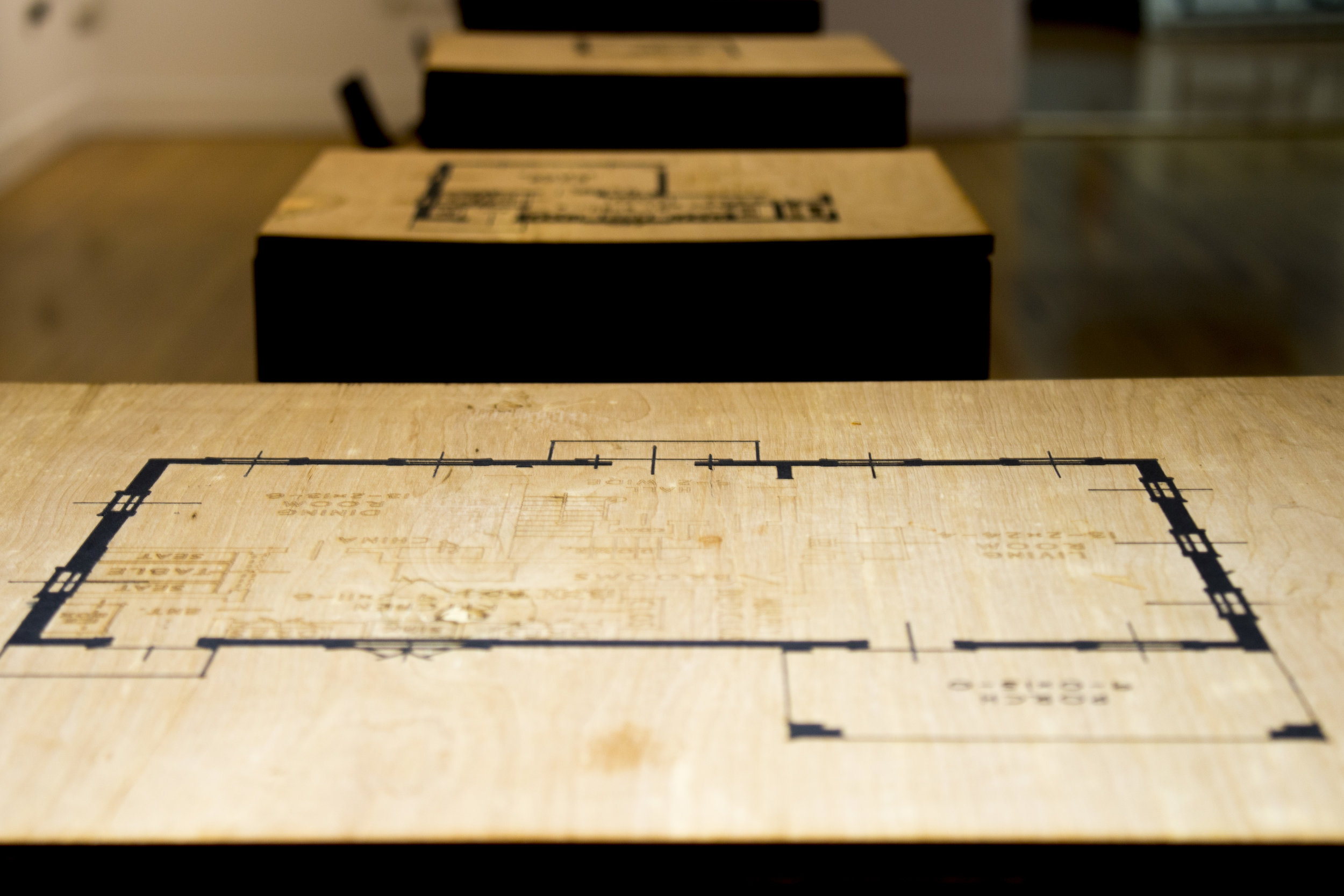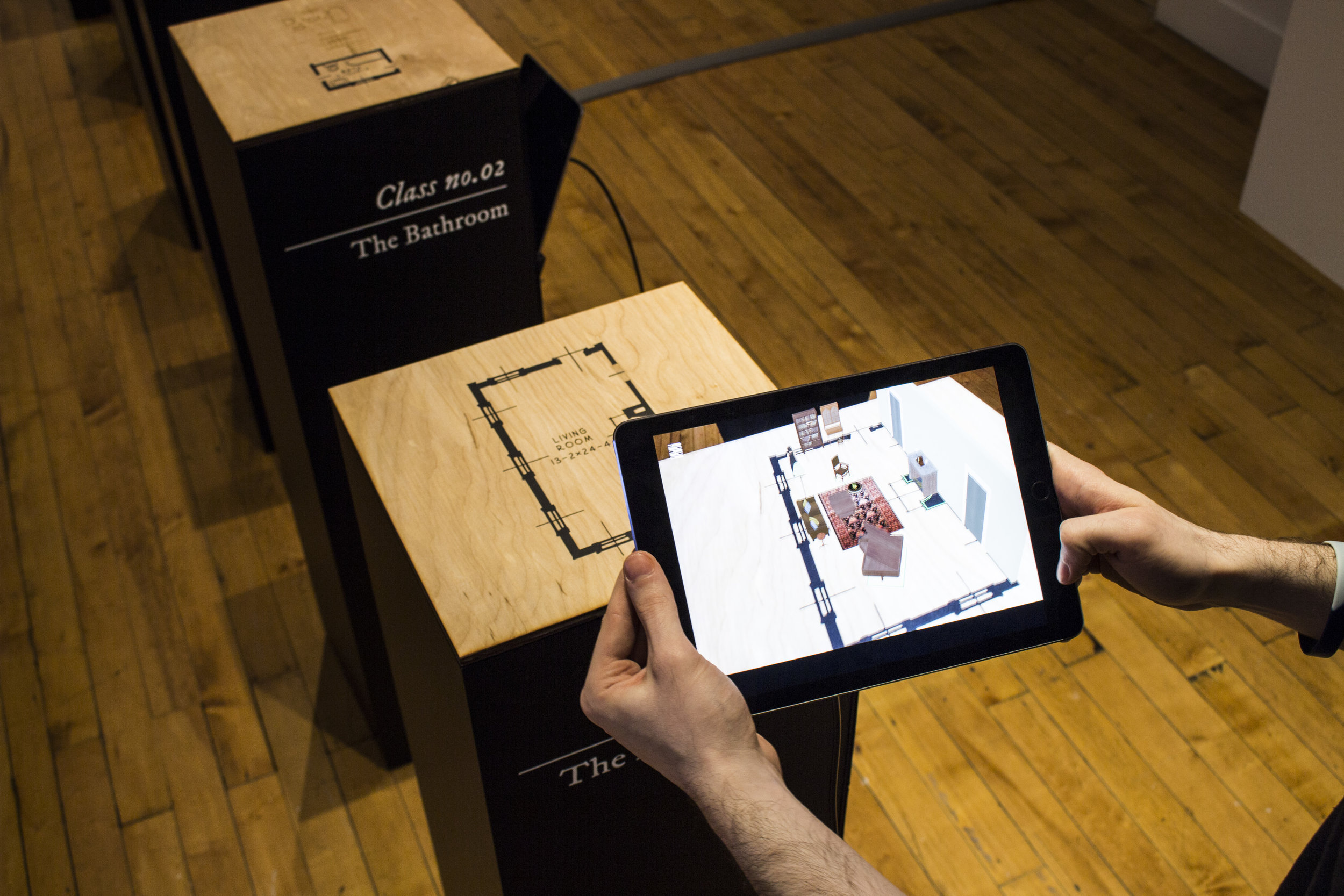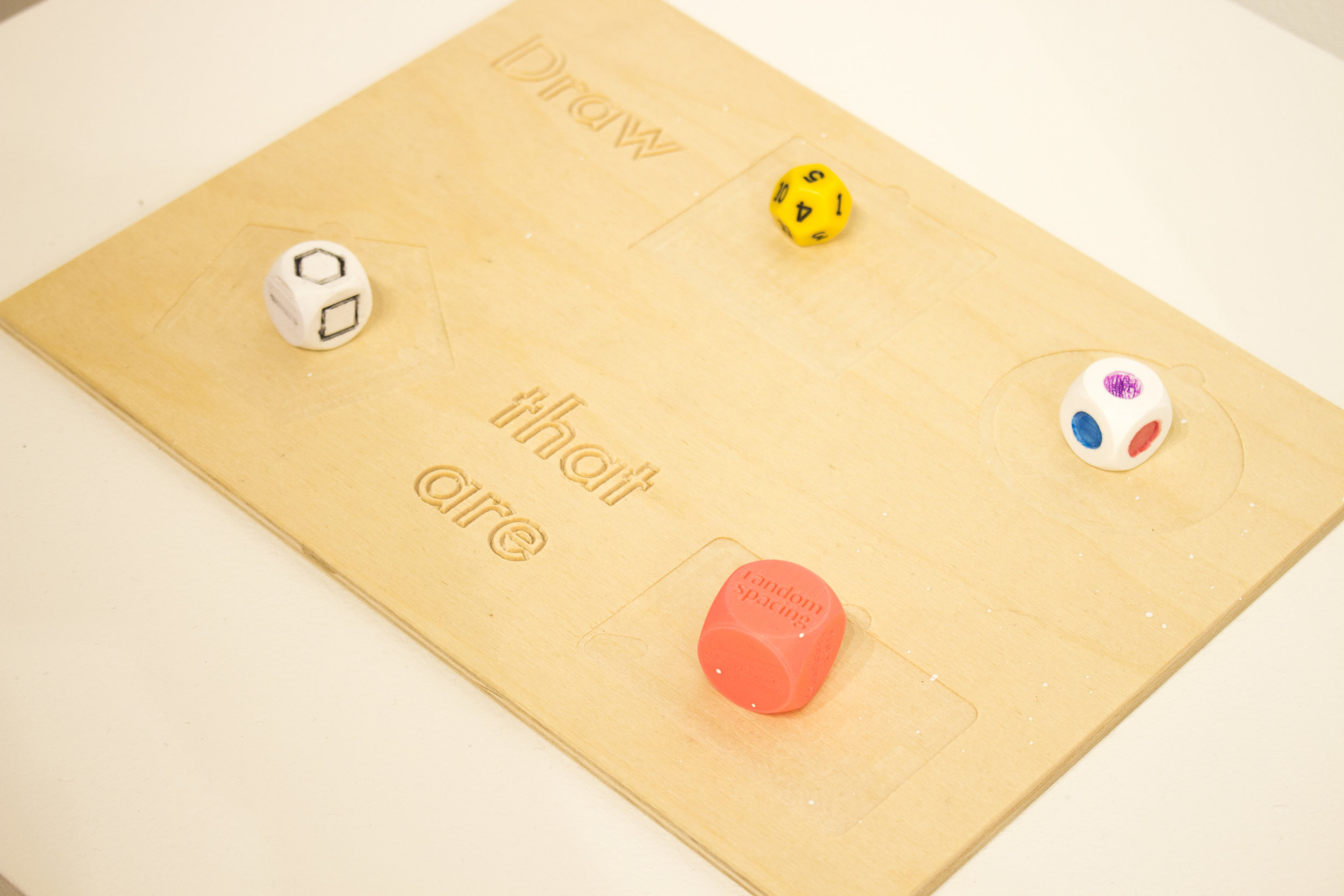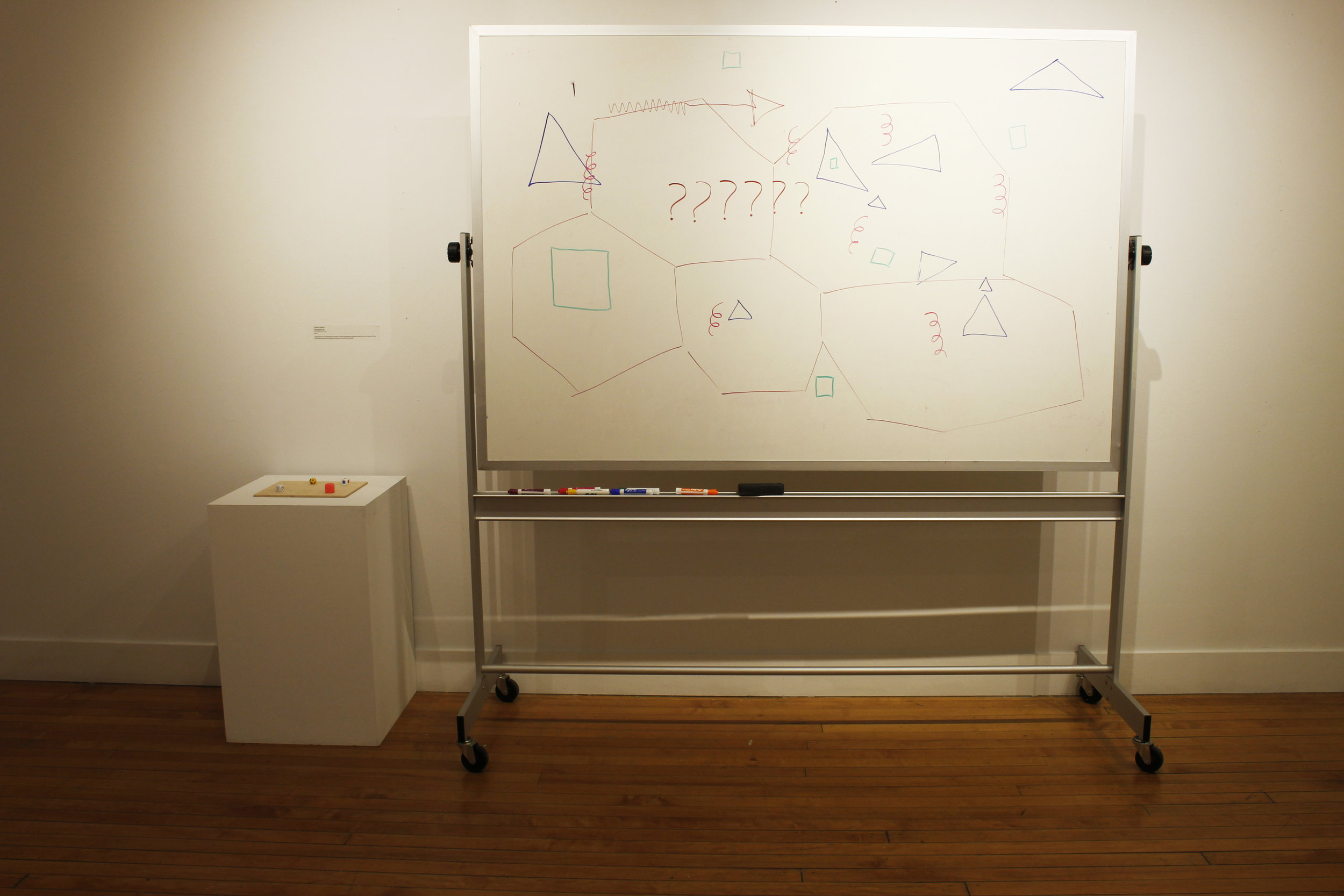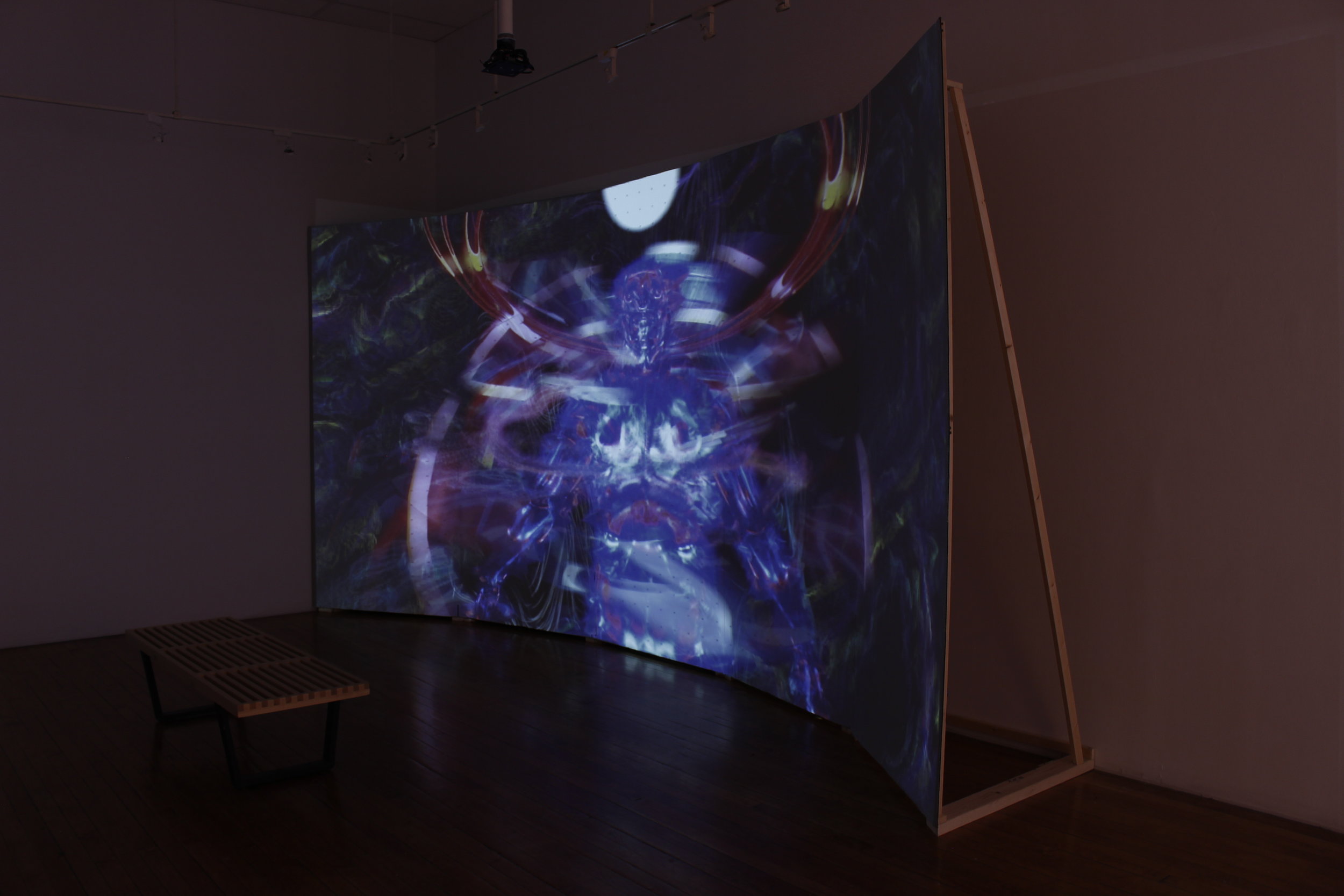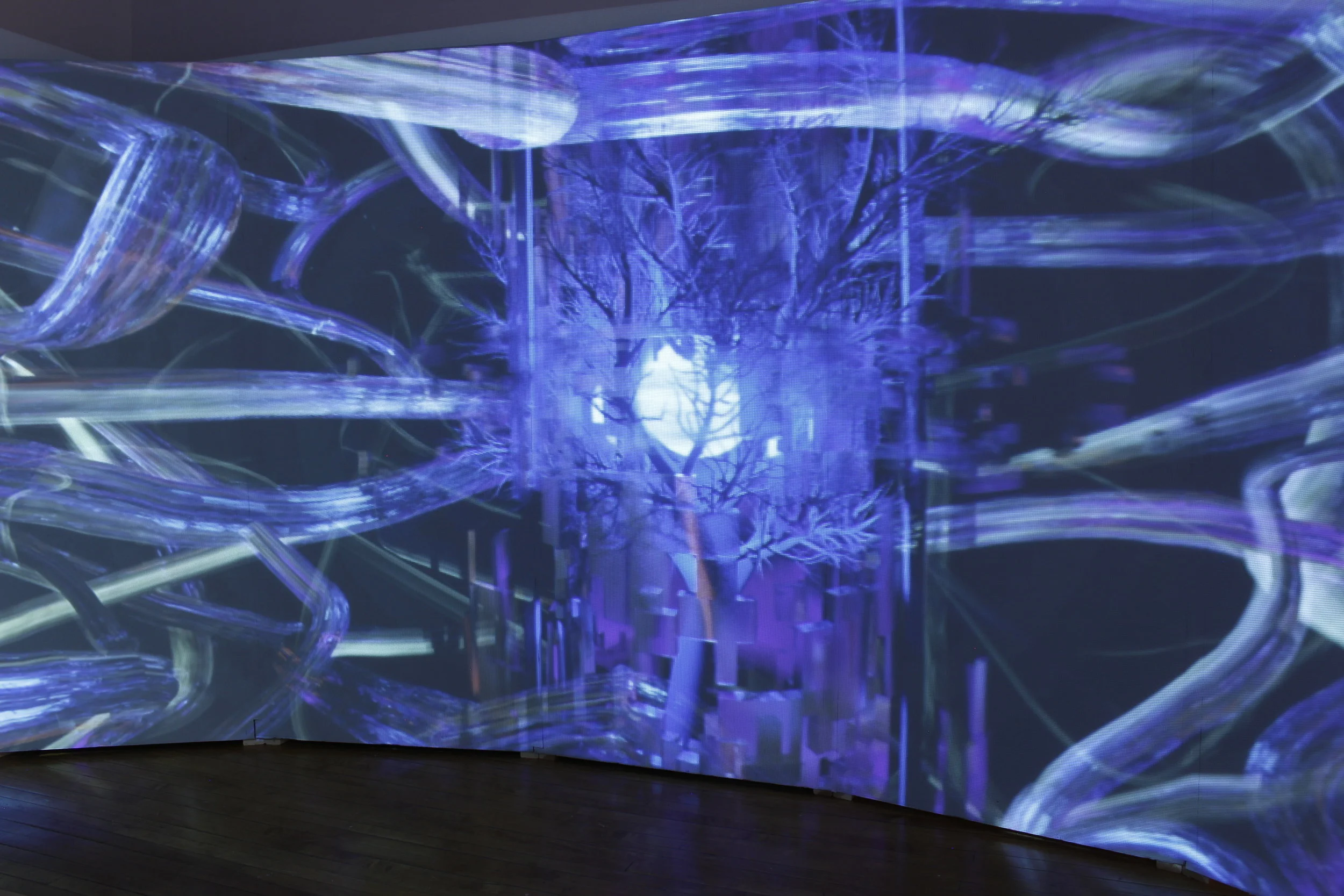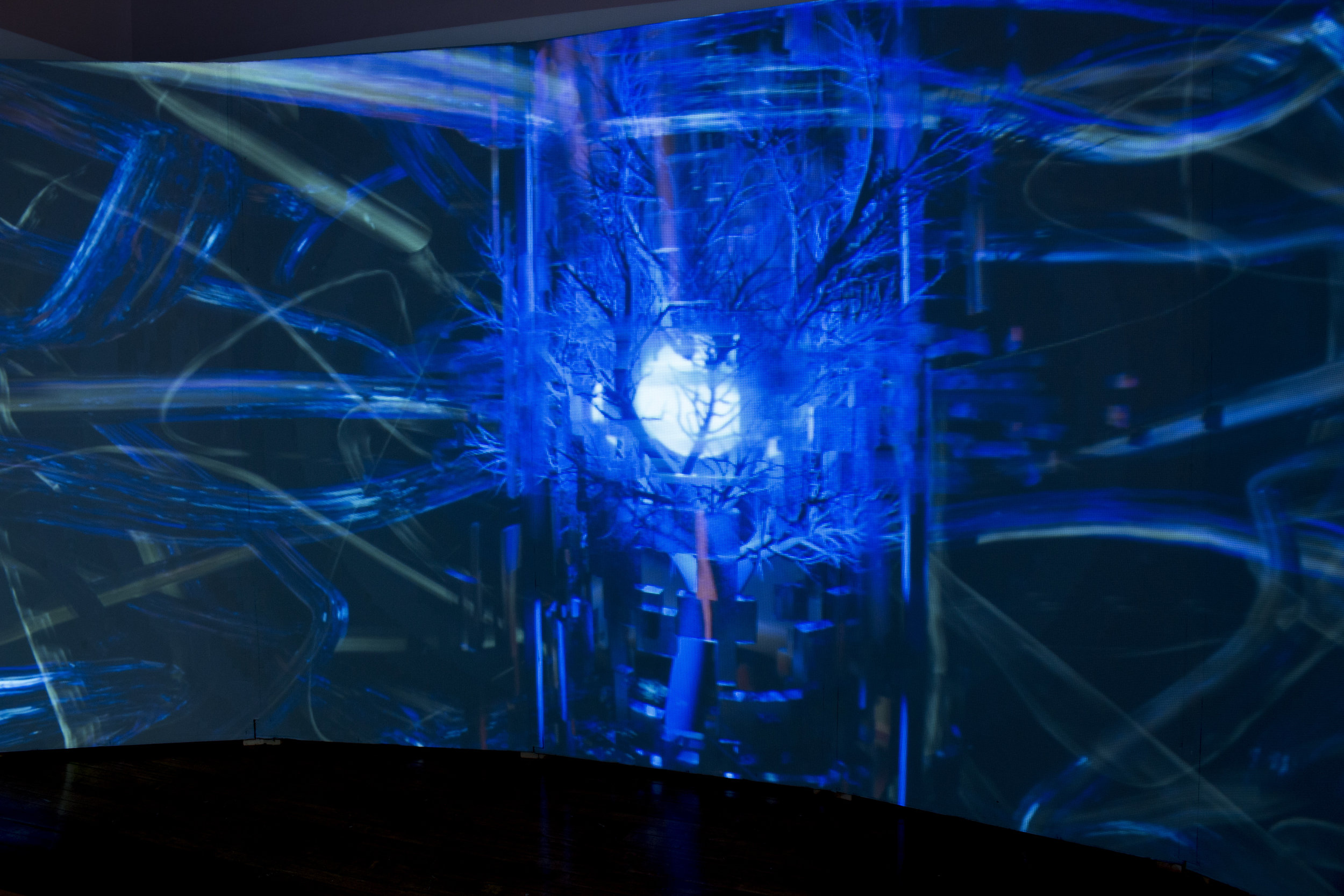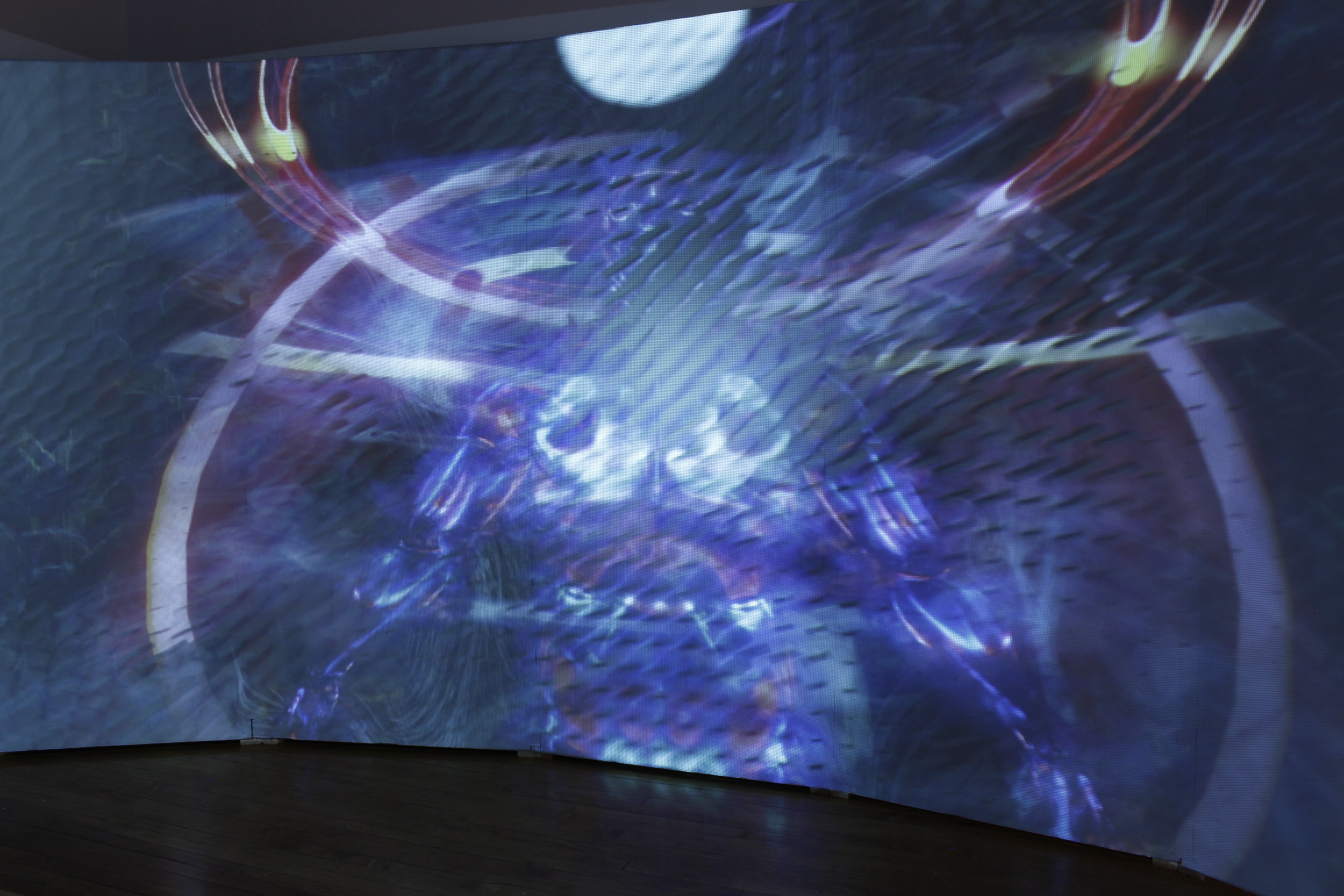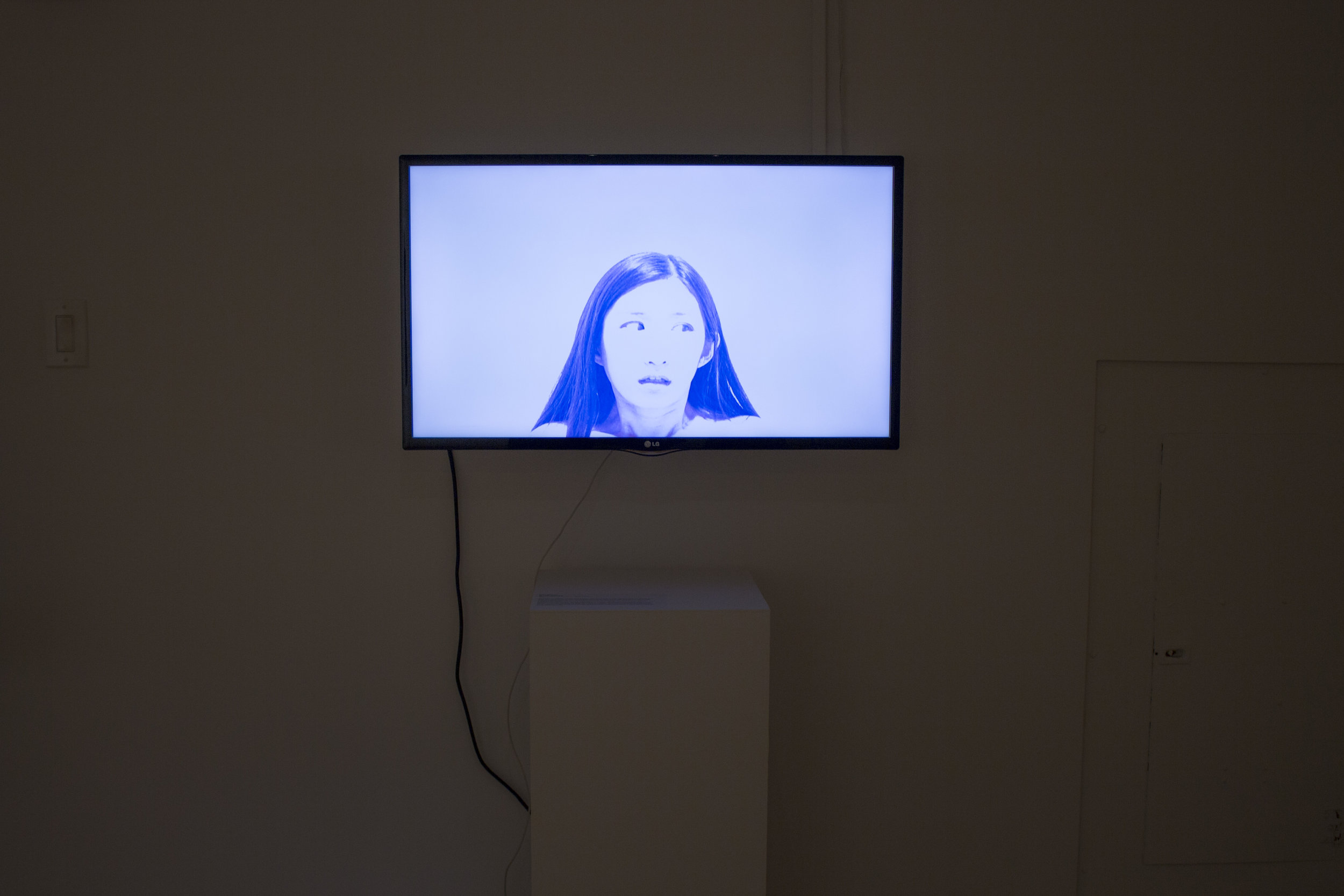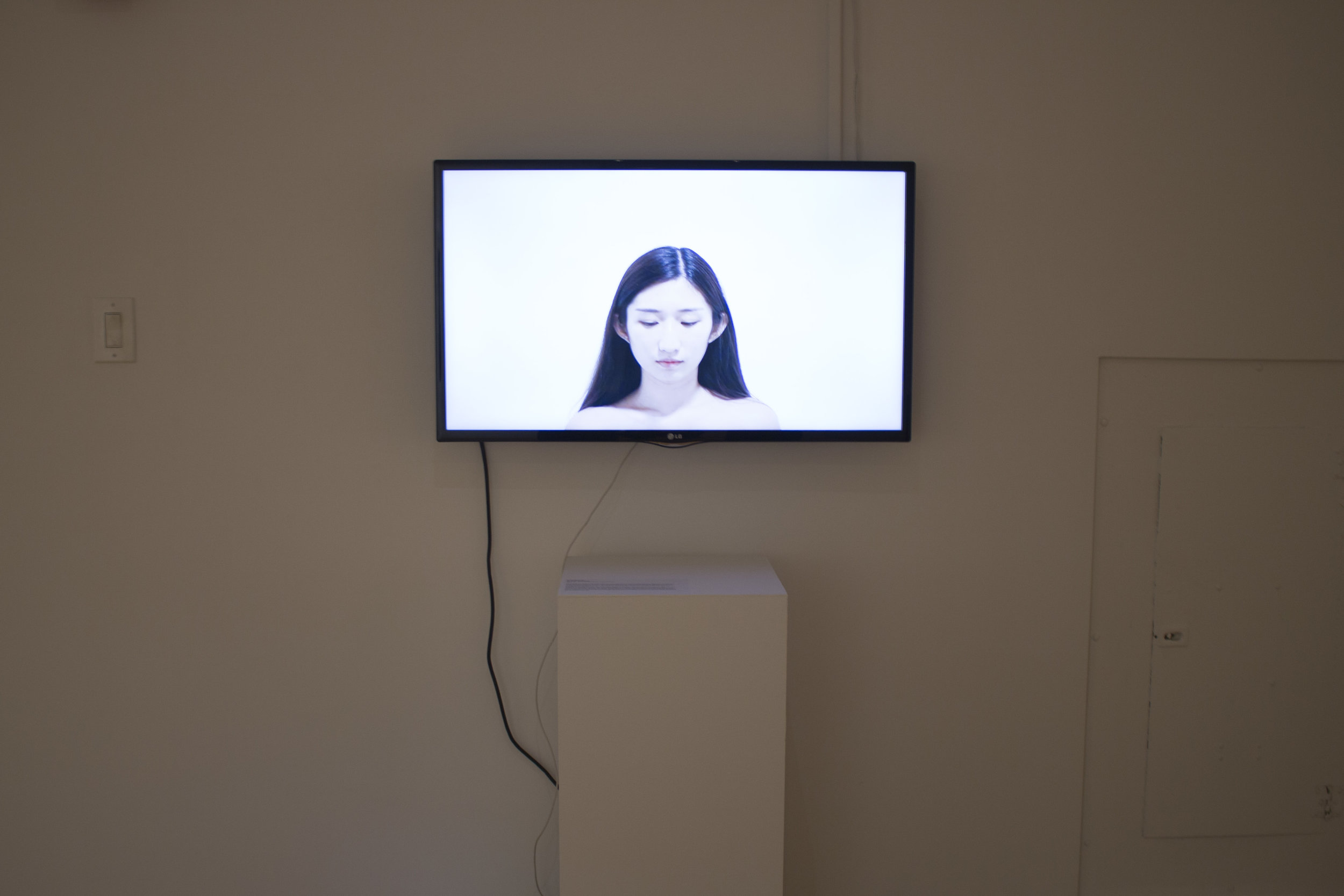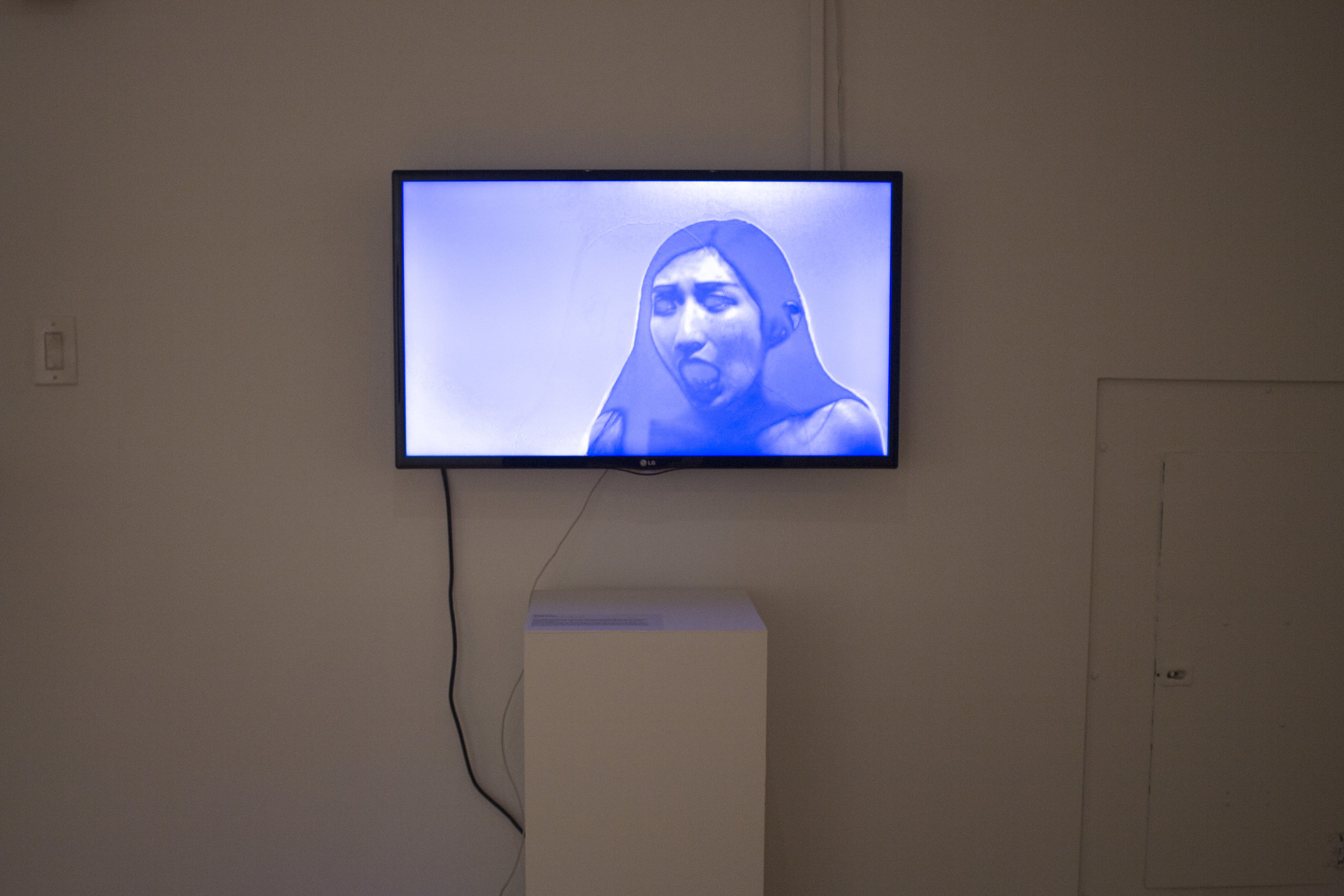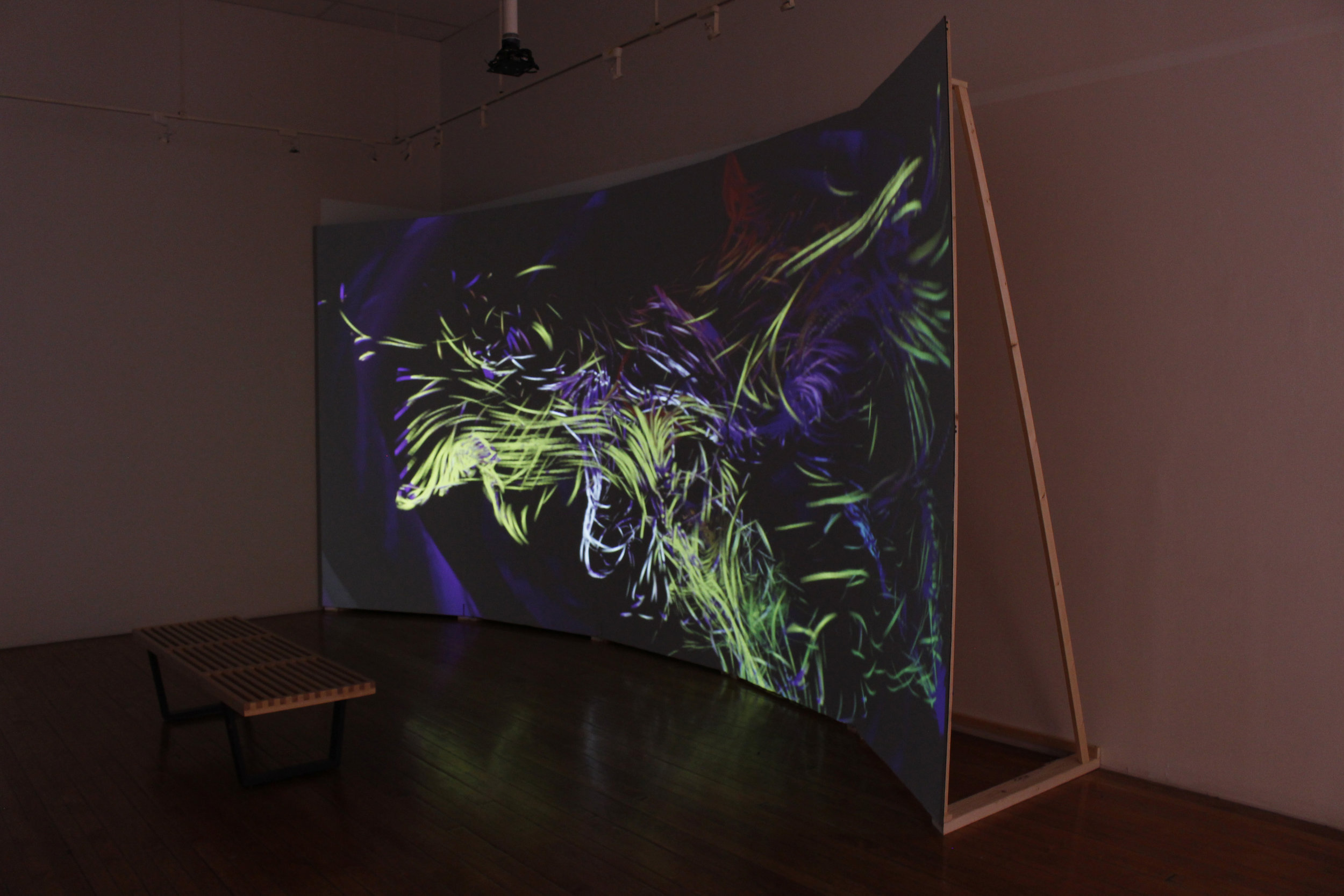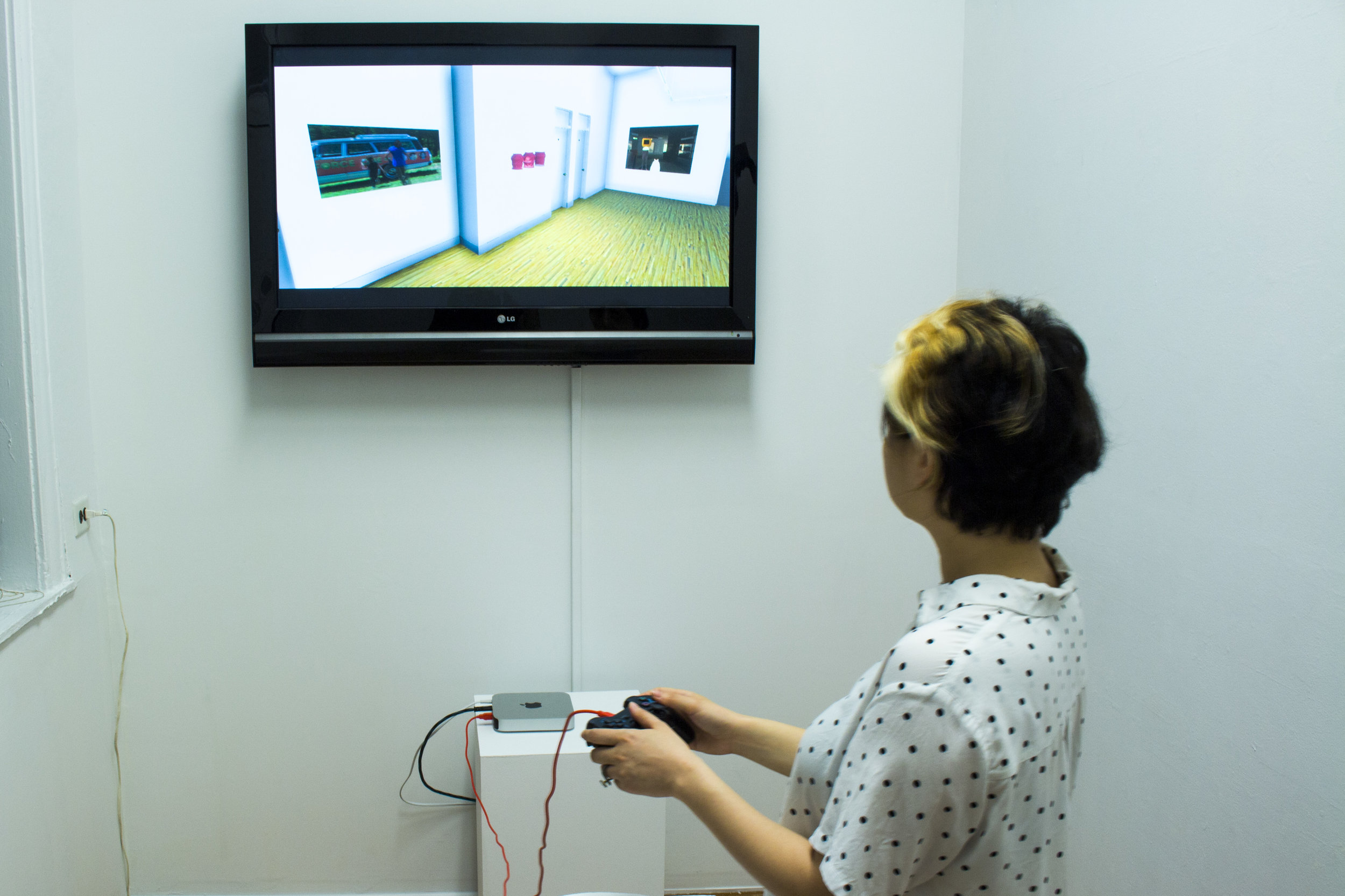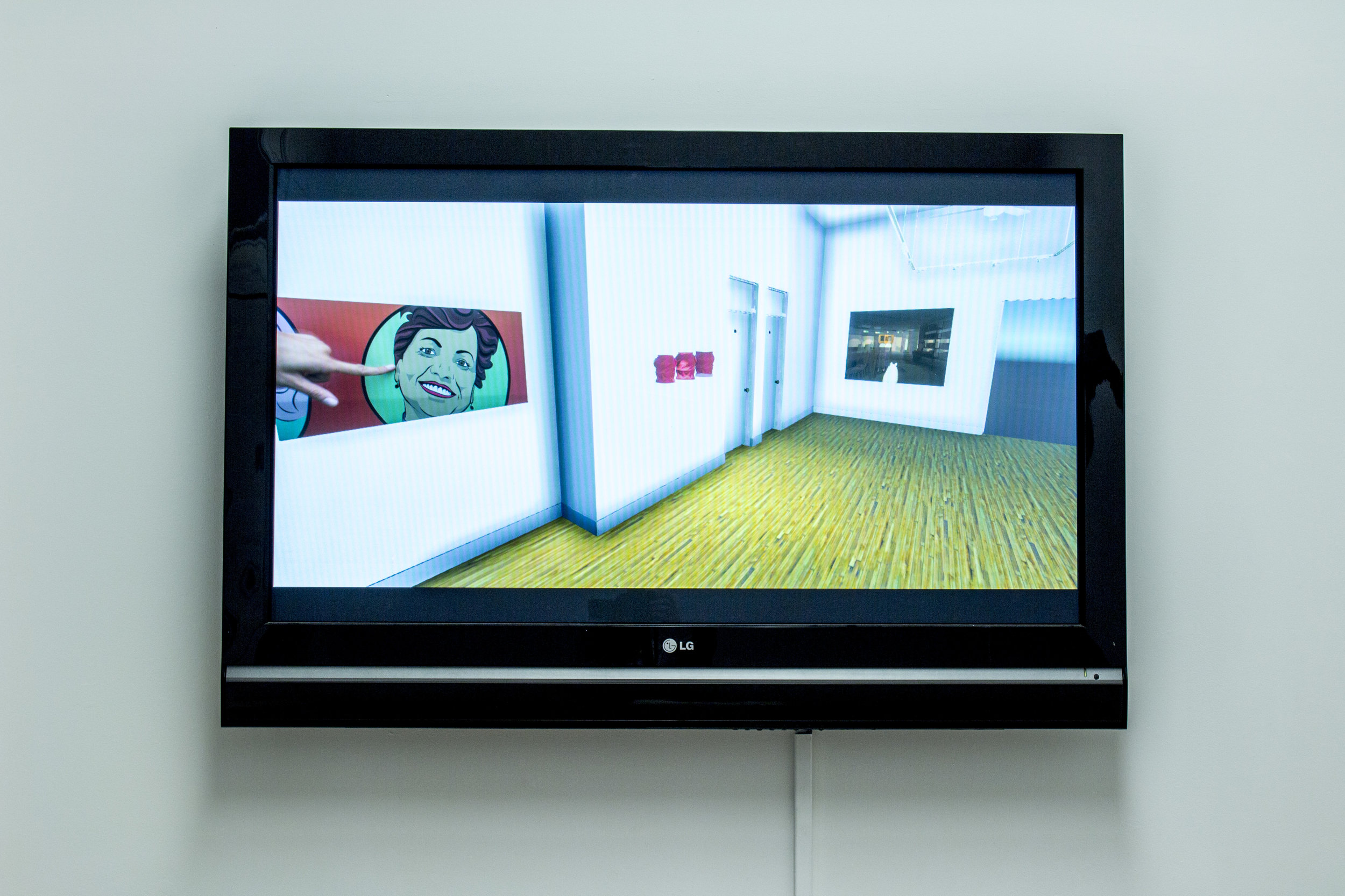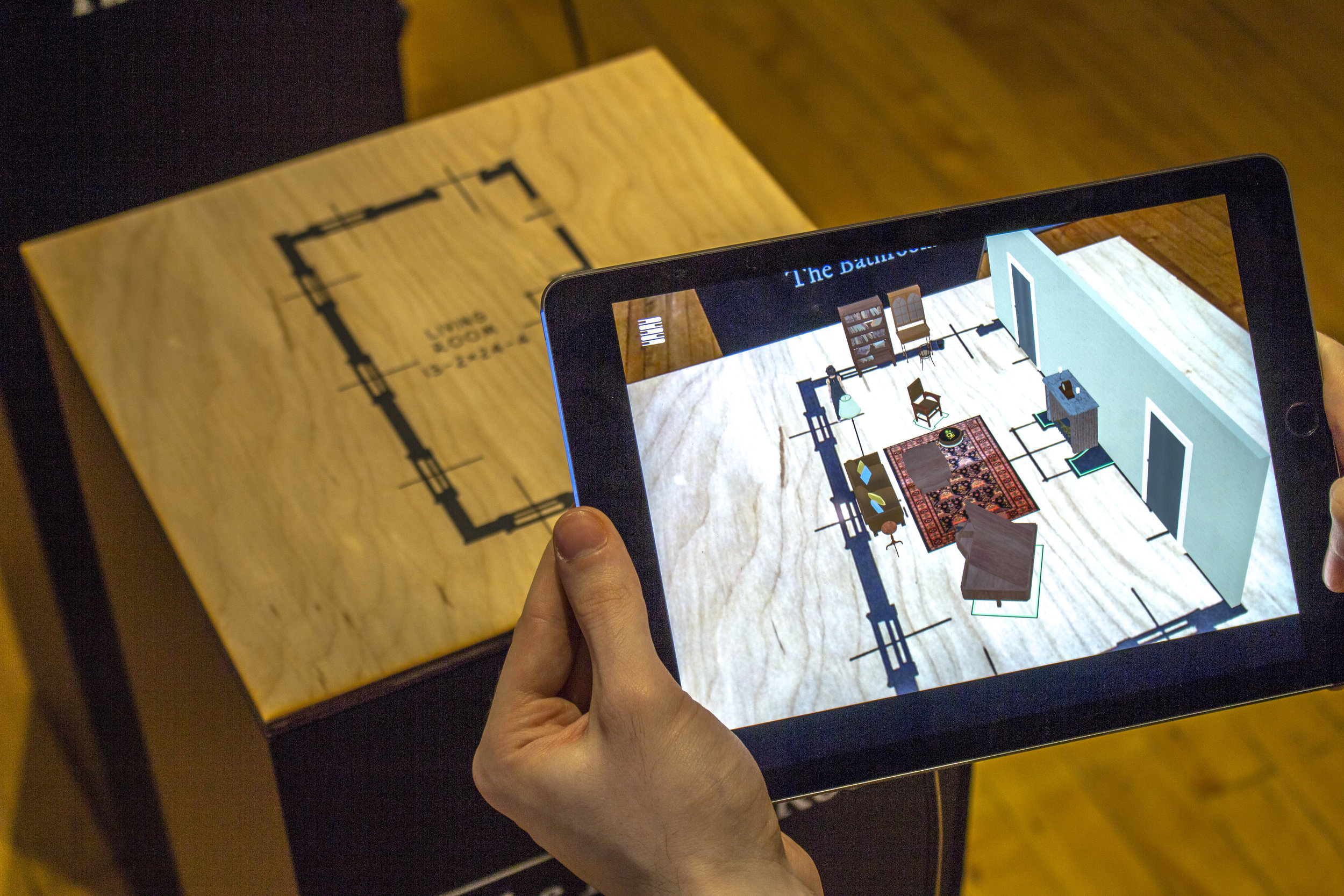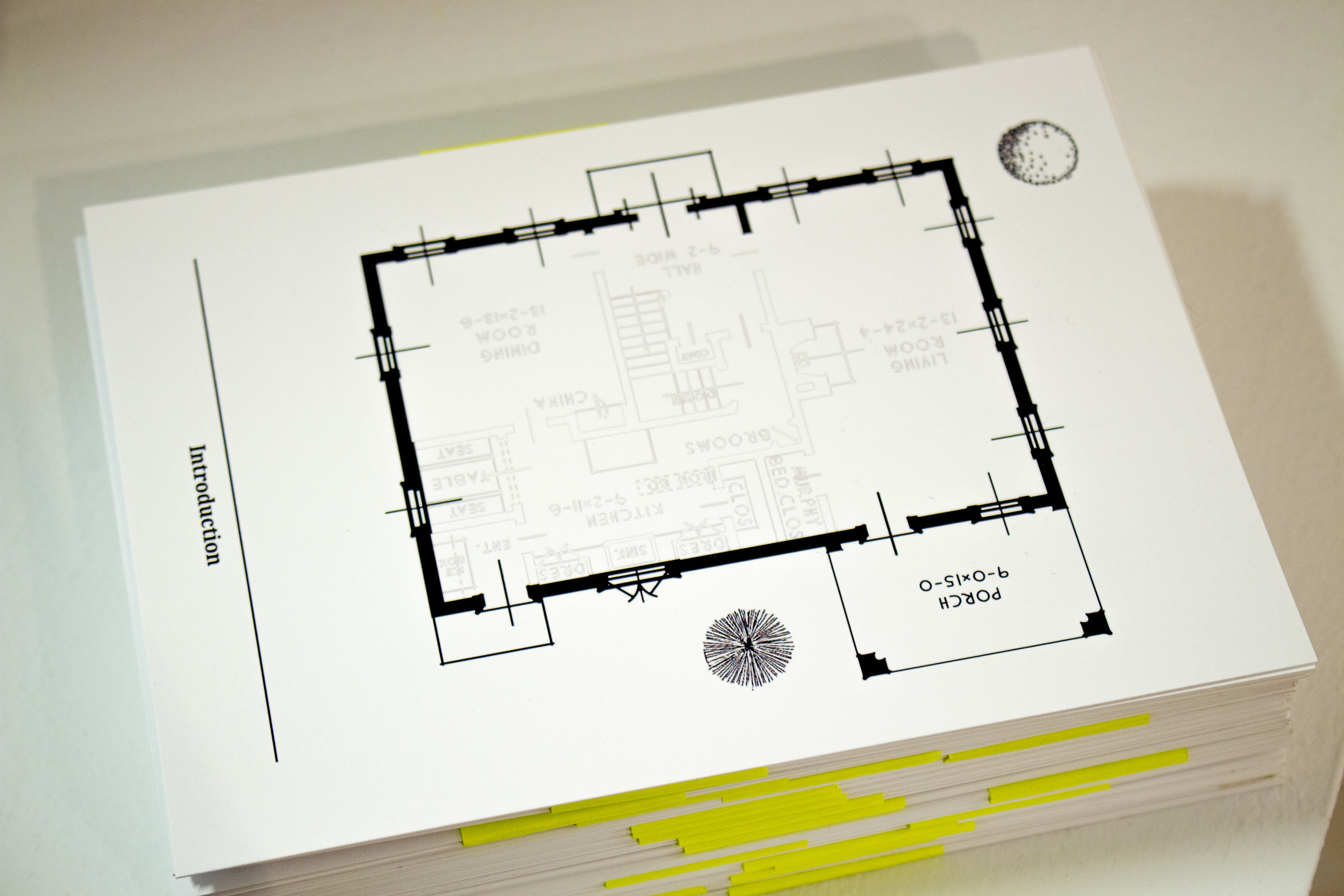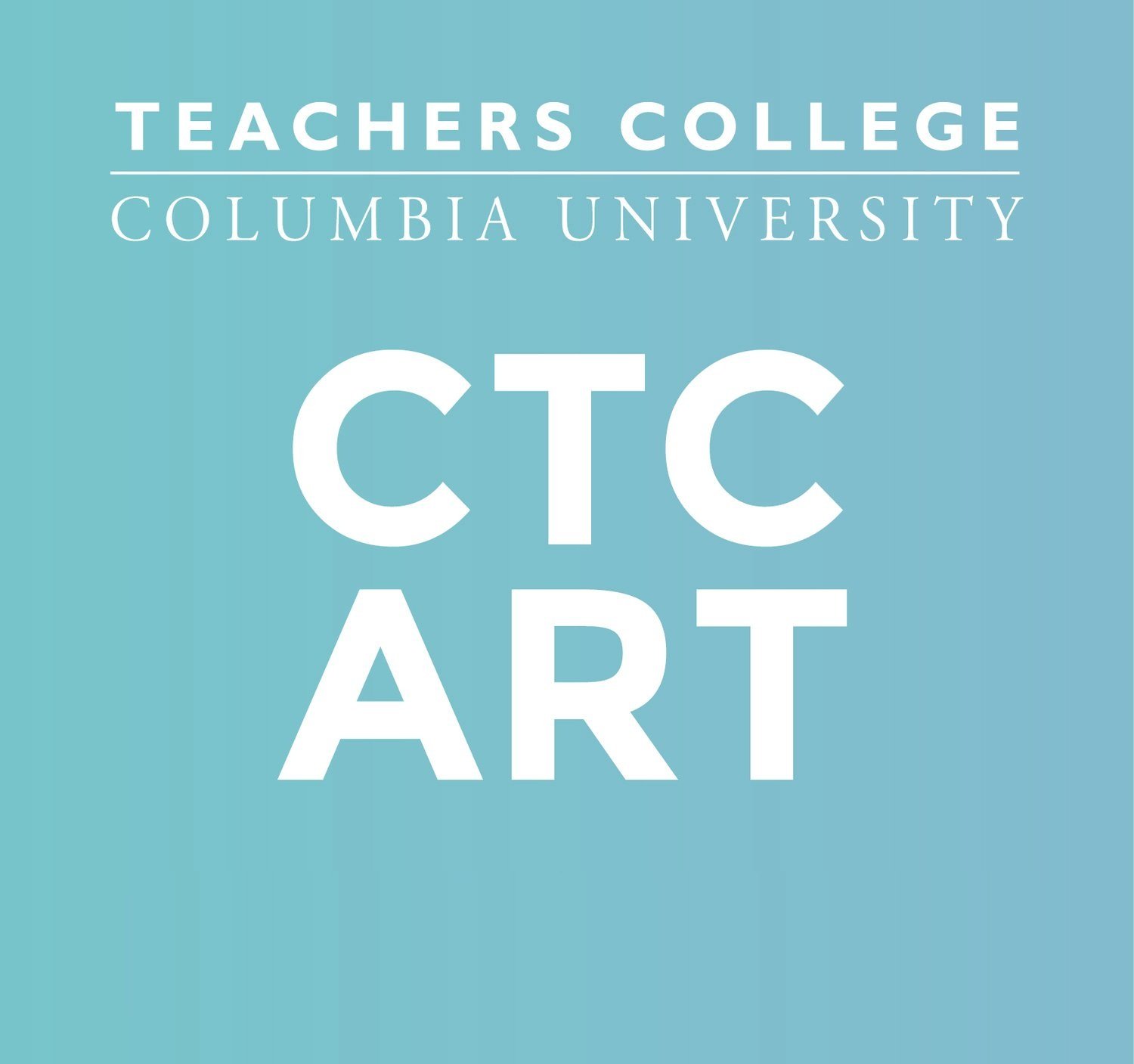On Collaboration
June 18–July 19, 2018
Reception: July 19, 5-7PM
Macy Art Gallery
Teachers College, Columbia University
“On Collaboration” is an exhibition showcasing recent works of instructors, visiting artists, students and friends of the Creative Technology concentration in the Art and Art Education Program. Featured works explore the possibility of collaboration to revisit stale definitions, overcome divides, and transform communities into vibrant spaces for collective authorship and artistic creation. The exhibition will run in tandem with the Creative Technologies Symposium V, which takes place on July 19th from 1 pm - 6 pm. “On Collaboration” will be on display at Macy Gallery, Teachers College, Columbia University, from June 14 - July 19th, 2018, Mon - Fri, 10AM - 6PM. A public reception is planned for July 19th, 2018, from 5 - 7PM.
Exhibiting artists:
Nadav Assor, Jaymes Dec, Marisa Jahn, Erin Posch, Zhenzhen Qi, Yang Wang, Catherine Lan, Avery Forbes, Nicholas Sadnytzky, Dylan Ryder, Gina Marcel, Mengyu Li, Pasakorn Nontananadh, Nitcha Tothong, Ziv Schneider, Barbora Trnkova
Artists Statement
Barbora Trnková & Tomáš Javůrek
http://tomasjavurek.czproblem-generator.metazoa.org/
ChatShow
web application
2016
Chat the show! Meet our ArtBots!
The &ChatShow presents a curatorial project and a group exhibition in the same time. In this case, the double role of the authors is floating. In curators´ role, authors approached ten befriended artists and invited them to take part in a chat. During their discussion, their roles are even and sometimes they change. They become constructors of the situation, so as the person on the other side. Duration of individual dialogues and the attitudes of approached artists differ in many respects. Some of them use this medium to promote their opinions, others to have an intimate conversation; someone prepared a joyful concept or even tried to state unprecedented form of artistic message. Chats are already finished, but the application retains a feeling of chatting in presence. However, the ArtBot is not Siri. ArtBot doesn´t answer our questions, only elaborates on own answers. Dialogues sometimes feel fragmentary and it seems like the ArtBot was sending them randomly. However, that is not the case. Answers are arranged chronologically in the same order as they were told during live action. Texts, which originate during chatting with audience, can be perceived as literary creation, a script for a play. The &ChatShow attempts to debunk stereotypes of how art and works of art are perceived and to situate them into context of locality, friendship and everyday life situations. And at the same time, it works with attributes of nowadays commonly used communication media, with their intimacy and detachment, their specific temporality, their room for making up contents, linear narrativization, etc.
The exhibition project &ChatShow was originally created for the router.gallery in panke.club in Berlin. In Brno, the &ChatShow was seen at the beginning of this year in the Klubovna gallery, and under the accompanying programme of the Brňenská 16 festival.
Zhenzhen Qi, Yang Wang
ThingThingThing
Unity, 3D Art
2017
Making an art game is like daydreaming - one that we can go back to over and over again. Game Objects are external manifestations of creators’ spirits. ThingThingThing is an experimental collaboration between artist duo ZZYW, formed by Yang Wang and Zhenzhen Qi, and a group of participants. Through a series of artists-led workshops, participants learned fundamentals of video game development, and made a collective art game along the way. At the end of the two days, the result is a film that generates its own plots in real time, composed by all participants using Unity, a video game development platform and C# as the programming language.
Pasakorn Nontananandh
http://www.akaliko8.com/
Sound Collaborators: RE (Jake Adams, Maxim Elrod, and Teerapat Parnmongkol)
Collective of Time Being
Pre-rendered video (original format, interactive installation)
2018
Collective of Time Being is an interactive installation that continuously evolves as it merges the audience into a flow of memories, dreams, and self-awareness. Technically, a motion sensor device captures real-time movements of the audience that randomly combine with pre-rendered 3D animations projected on 2 curved walls facing each other. Bits and pieces of the artist’s personal memories (past) blend with the audience’s presence. Together they produce the desired re-orientation of time-space for the audience.
The version shown here is the pre-rendered video version which artist mixed data set of captured human’s movements with abstract moving images in order to replicate real-time interactively between human and the artwork.
Nitcha Tothong (Fame)
Remembering
Custom circuit, Custom software, Thermal Printer, Thermal Paper, Heat Pad
2018
This installation features a thermal printer that performs and describes memory by slowly printing short sentences about forgetting and regretting on a paper scroll. The paper scroll is almost the height of a person and feeds back into the printer in a loop. As time passes, the text is repeatedly printed over itself until it becomes illegible. The thermally sensitive paper also darkens around the corners, further obscuring the text. Over time the audience will experience different visual perceptions of the story.
Remembering replicates the idea of the limited capability of human memory, which is distorted unconsciously over time; the more one recalls, the more what is recalled changes. The slow time scale of the piece draws attention to the subtle changes created when a text is repeated, overlapped and blurred. Human Memory error and Feedback loop.
Ziv Schneider
https://cargocollective.com/zivs
Household Arts for Students From Other Lands
Medium: Augmented Reality
Date: 2018
In The Art of Living, Ziv Schneider reimagines the course “Household Arts for Students from Other L ands” taught at Teachers College in 1923. With it, Schneider presents the rendered model of the “National Better Home”– a model home built by the U.S. government to educate Americans about homemaking and homeownership.
Schneider, who came to the U.S. as an international student herself, is here reversing her role and casting her avatar-self as the teacher/trainer for this guided experience.
She is the one instructing us on things like how one should decorate their home and the acceptable way to clean oneself. All her answers are based on what educators at the time thought we should and should not do to live a proper American life.
The work exemplifies the famous quote attributed to scientist George Box, “All models are wrong, but some are useful.” The model, in our case, the house, exists purely for the sake of pedagogy. The “National Better Home” was designed to be a segue to “real life,” and as such it optimizes usability and allows “learning by doing”. Now, in its new virtual form, the model allows participants to make new sense of environments that no longer exist. The game-like narrative and user interaction allows us to experiment in order to better understand the systems in which we operate and the objects that occupy our world.
Schneider’s version of the course is a copy of a copy, what Baudrillard called “a simulacrum to the second power.” As a virtual interpretation of an idealized place, this art asks us to examine our nostalgia for a prototypical American home.
Nicholas A. Sadnytzky
Macy Gallery in the Digital Age
CAD and VR
2018
When I was asked to create a digital model of the Macy Gallery at Teachers College, Columbia University, I was very excited to accept this project. After receiving the blueprints, my father and I measured a couple of walls to see if the blueprints were correct. Unfortunately, the blueprints were not correct (expect for one wall). During the 2016 winter break my father and I measured the entire gallery. Then I proceeded to model the gallery in Rhinoceros 3D. The final rendering was done in the default Rhinoceros 3D renderer and the virtual reality experience was done in Unity. Overall, it was a very fun project.
Trisha Barton
Eye Scream
Medium: Wood & Acrylic
2017
This project focuses on raising mental health awareness in the Black community, delivered through an Afrofuturistic lens using the concept of phototherapy. Eye Scream is an art piece, and device, that takes the concept of light therapy and applies it to neopixels that react based on amplitude. When you sing or talk to it, it lights up. The lighting up follows the concept of displaying light to increase serotonin production, similar to how the Seasonal Affective Disorder (SAD) lamps work. But unlike the SAD lamp, Eye Scream ties into black culture through its light responding to sound. Since movement and discussion are some of the ways people in the black community cope with their ailments, Eye Scream encourages community discussion, talking and singing.
Dylan Ryder
https://dylanmryder.wordpress.com/workshops/
Procedures #2
Medium: SLA printed dice, wood
Date: 2018
Procedures #2 is an instructional art machine. A dice string generates drawing prompts for users to execute. Please roll the dice and use your instructions to draw on the work area provided.
Mengyu Li
At Your Presence
Javascript, Kinect Motion Sensor, Digital Imagery
2017
The installation defaults to a still image of a calm face, but as viewers walk toward it, the Kinect detects their movement and flashes a “hidden” face showing different emotions that change depending on the position of the viewers. In this work, I turn my attention into creating a connection with the public. The interactivity of this installation engages public with my art to create an art experience that viewer can feel their own contribution to the art.
In addition, this work reveals the suppressed emotions. People in western culture tend to see sensitivity as a negative thing and sometimes link it to vulnerability. As a result, many people try to suppress their emotions, especially in public. This social convention is so deeply routed one can even find it in the language routine. For example, when people greet “how are you”, it seems like the only legitimate response is “I’m fine/ I’m good/ I’m doing great.” It seems like we live in a culture where everything needs to be just fine. But are we always fine? This installation, through showing different hidden emotions in a public space, questions this social phenomenon.
Marisa Morán Jahn (lead artist)
CareForce One Travelogues
digital video film series for PBS/ITVS IndieLens Storycast (24 mins)
2018
A humorous and touching road tale, the CareForce One Travelogues is a Sundance-supported film series for ITVS/PBS Indie Lens Storycast featuring the artist Marisa Morán Jahn, her son Choco, and their buddy Anjum Asharia as they travel from their homes in NYC to Miami in a fifty-year old station wagon, the CareForce One. Meeting up with nannies, housekeepers, caregivers, and allies along the way, this series explores how care intersects with some of today's most pressing issues — immigration, the legacies of slavery, racial discrimination, and more. Produced by Studio REV- and Oscar and Emmy-winning filmmaker Yael Melamede (SALTY Features) with support from National Domestic Workers Alliance and Caring Across Generations, the film series are part of the CareForce, a public art and interactive media project that amplifies the voices of America's fastest growing workforce, caregivers.
Irene Posch
Tooling Electronic Textiles
Medium: Needlework tools, Multimeter
2017
A toolset is decisive in how the material can be handled and what can be produced. It also frames the skills needed to handle them. Introducing new tools to a discipline allows for new interactions with materials and makes new materials and routines accessible. Here, needlework tools are introduced to the processes of electronic making, to account for the integration of textile crafts into the field, making way for diverse materials and knowledge to be incorporated.
Traditional needlework tools are adapted to integrate electric engineering needs. As tools, they embody the collaboration between textile crafts and electronic making as an integrated practice. Functionally, these tools augment processes of textile crafting with electric properties. More broadly, they are a tangible provocation to roles and cultural assumptions about the technologies, and indeed crafts, that these tools enable.
Gina Marcel
https://teach21.theschool.columbia.edu/content/gina-marcel
Elevator On the Ground Floor
Fabric, Soft circuitry, Digital Embroidery
2018
Many think that giftedness drives excellence. But I know for me, it’s confidence. Confidence let me enter the elevator on the ground floor and ascend from there. This is what engaging with digital embroidery, circuitry, and creative technology means for me - the confidence to try something new and continue to learn.
Nadav Assor
Feelers
Medium: Single channel digital HD video
2012
Duration: 15:36 min
Two performers acting as themselves: a healer and a security guard, exchange roles throughout this piece. Each performer in turn examines the other on multiple levels, visually, physically, mentally and verbally, commanding their posture while stripping away layers of clothing and personal narrative, all with the aid and interference of a strange camera device. The choreographies of body-therapy and body-search are conflated and contrasted throughout this video, with each performer’s actions further mediated via a camera they wear, pointed at their own eyeball and thus providing a reflected image of the second performer, now the subject of their actions. Both participants’ stories triggered and exposed via the interface of touch reveal moments of vision and the lack of it - all while being constantly plagued by the blind spot generated by the camera itself, squarely present at the center of the frame.
Credits
Performers: Damon Fields, Marissa Perel
Cinematography: performers + Yoni Goldstein
Sound: Adam Davis
Catherine Lan
The Symphony of the Massage
Medium: Digital print on paper
2018
In our fast paced world of the Internet where various search engines are readily available, The Symphony of the Massage is a collaborative musical piece that invites the audience to relax, meditate, and reflect together on the issue of freedom and censorship. The abundant information, data, voice, and multi-media content that is been searched and used, is in fact not being aware of by many users and is taken for granted. This is a prelude that will show again from September to November inside a furry relaxation room with furry furnitures for the audiences to interact with and listen to YouTube music through hacking the Internet in Hexiangning Art Museum in Shenzhen, China – where YouTube, Google, and Facebook are banned. On the other side of the globe, the same music in contrast reflects the notion of extreme protection and censorship that excludes many users from freely surfing the Internet.
Image Documentation
